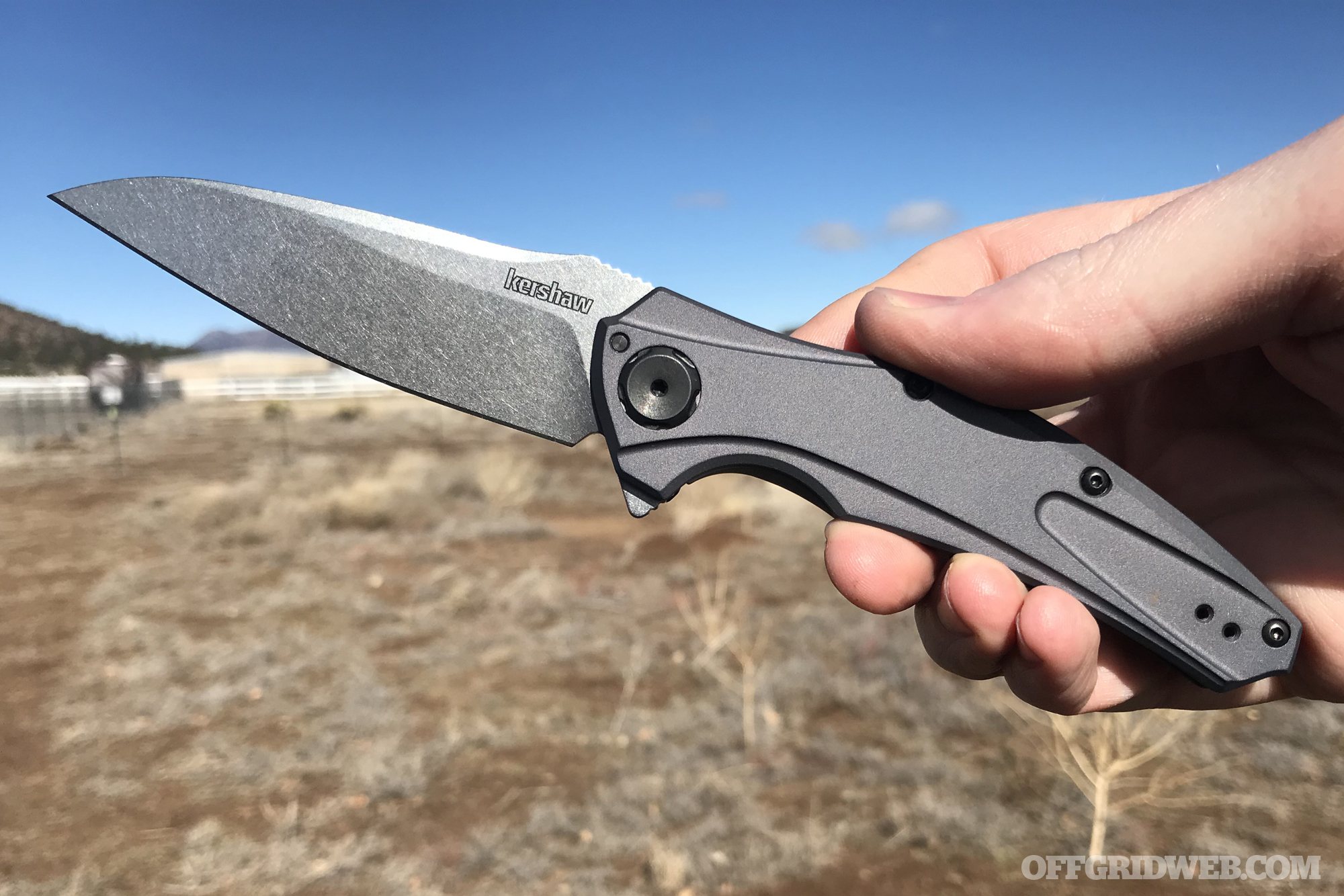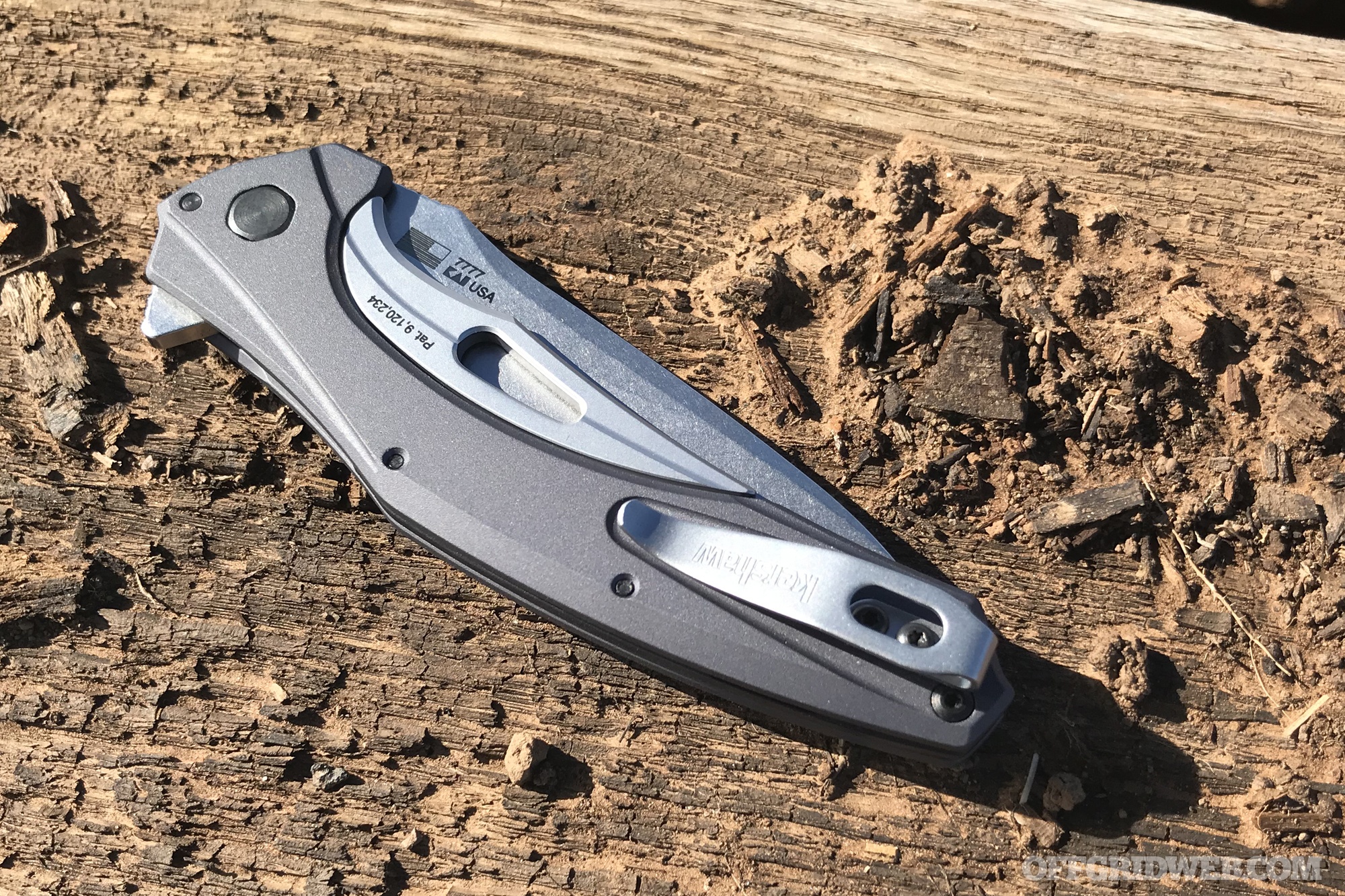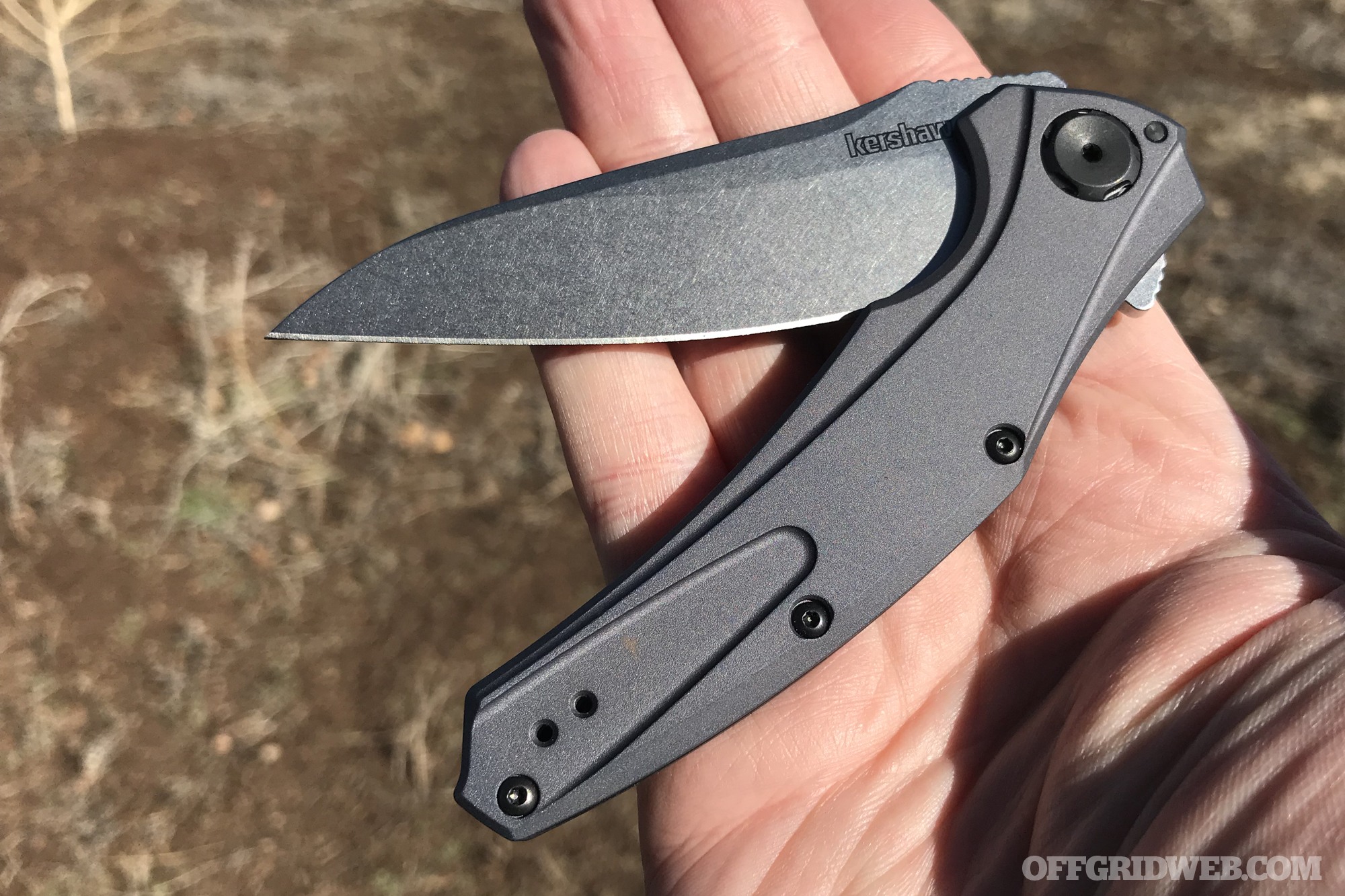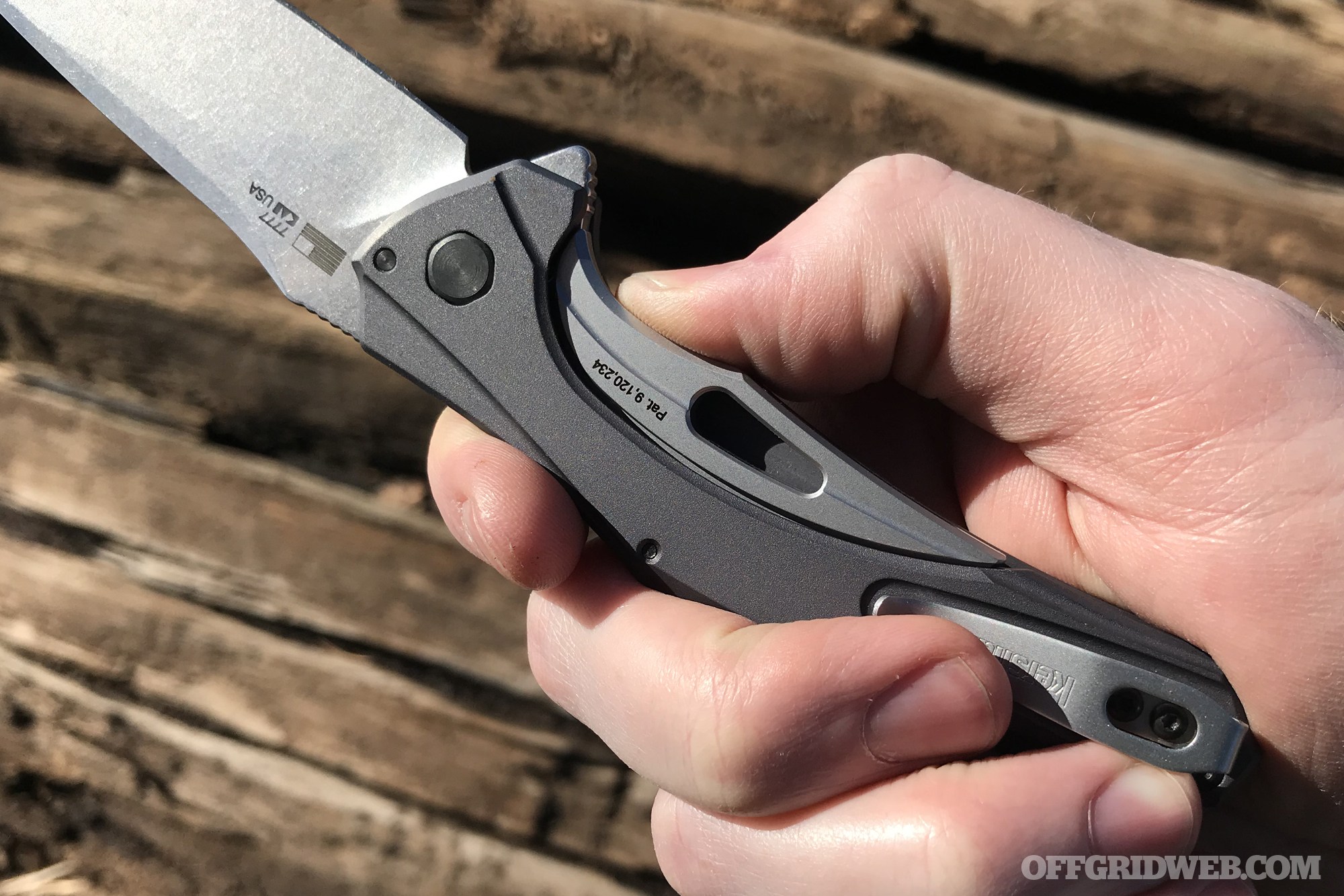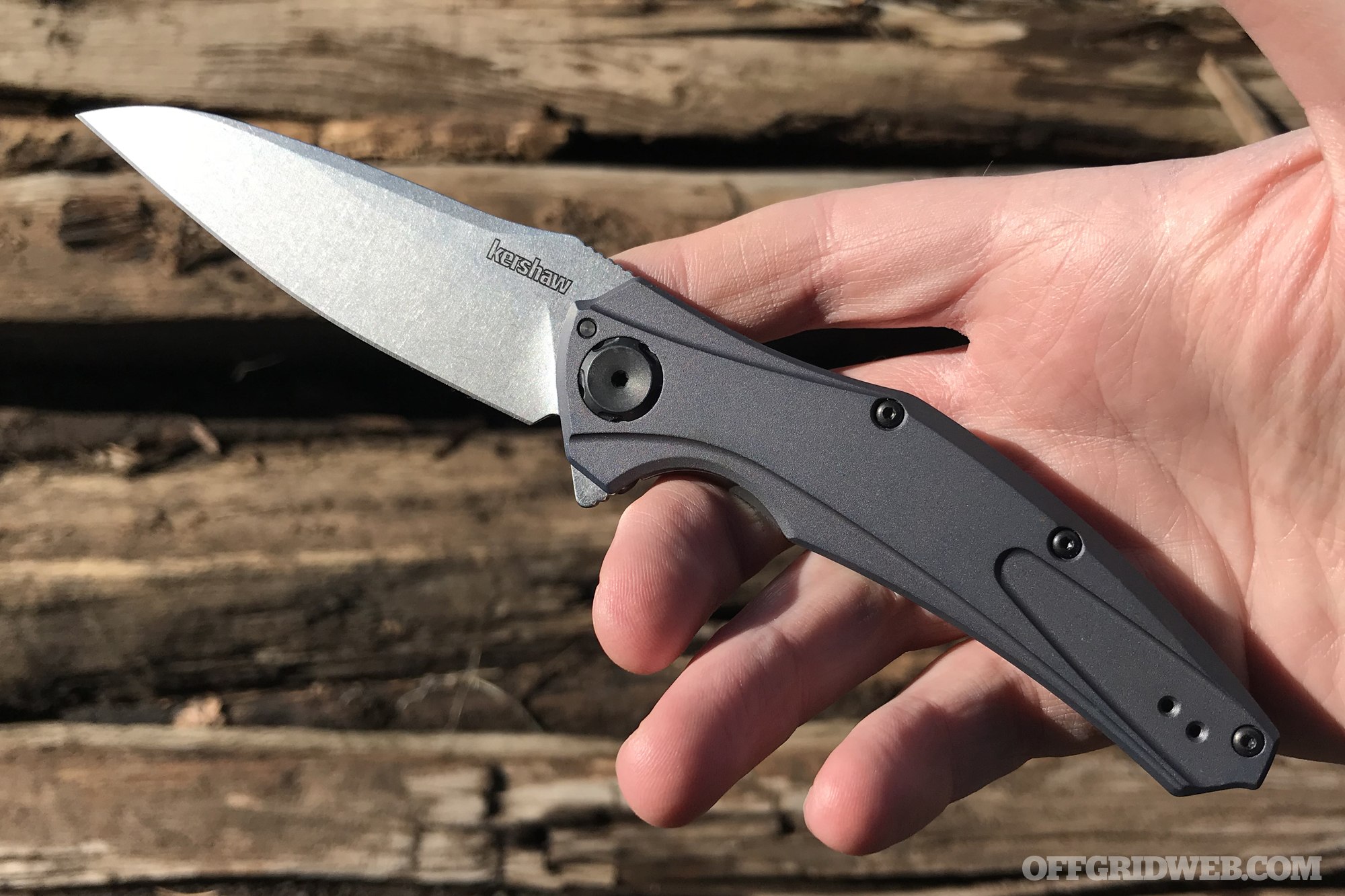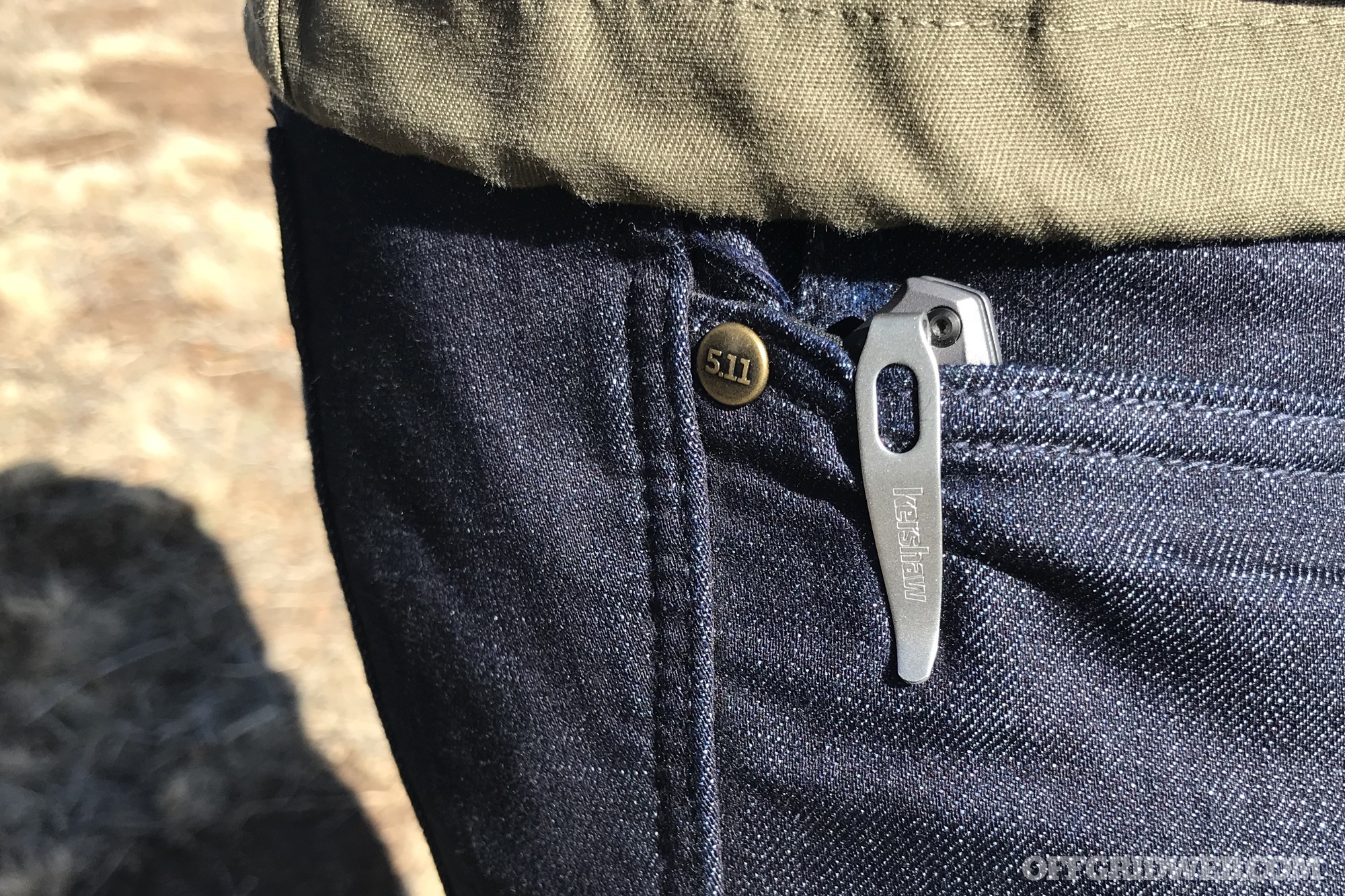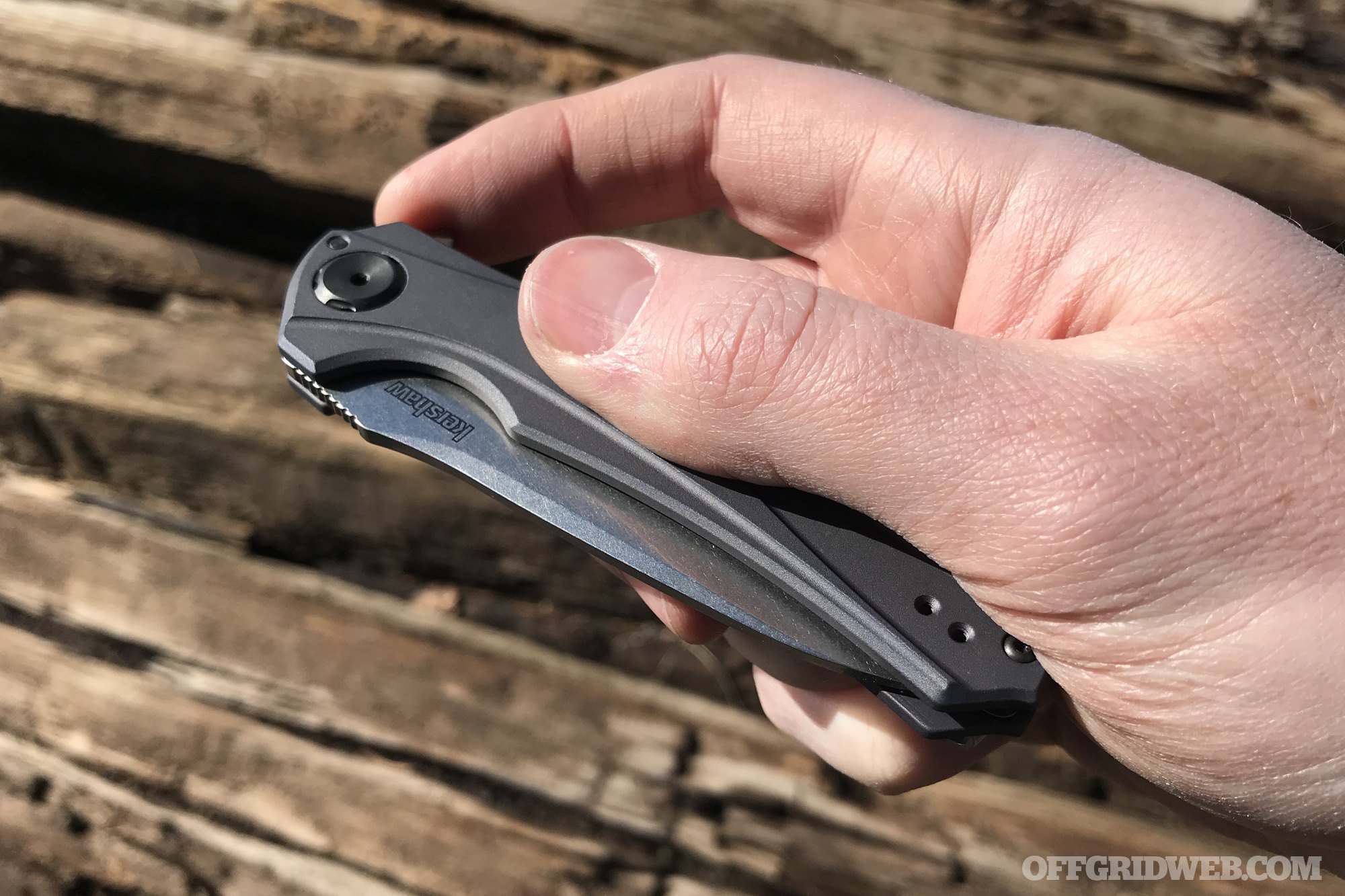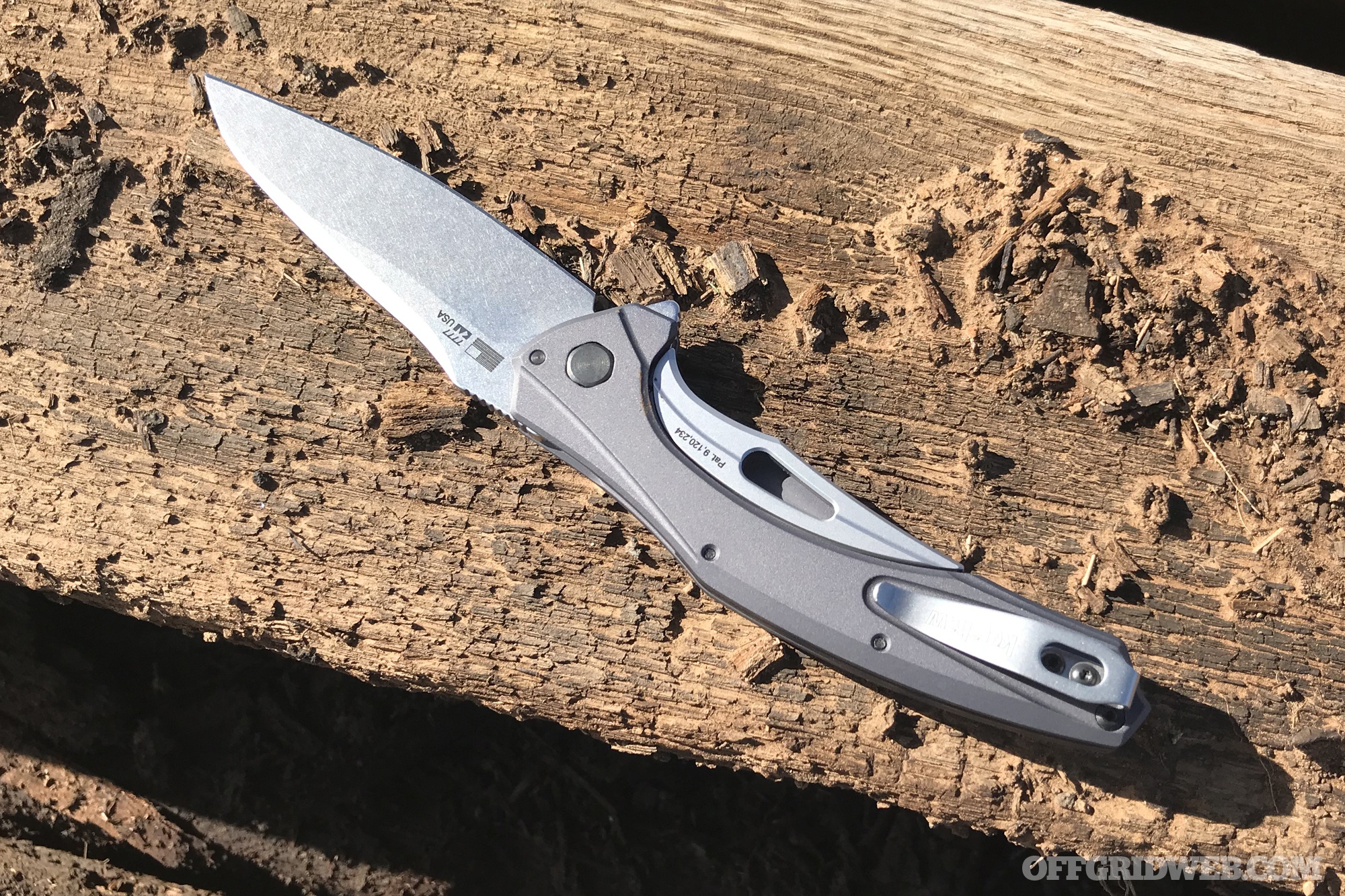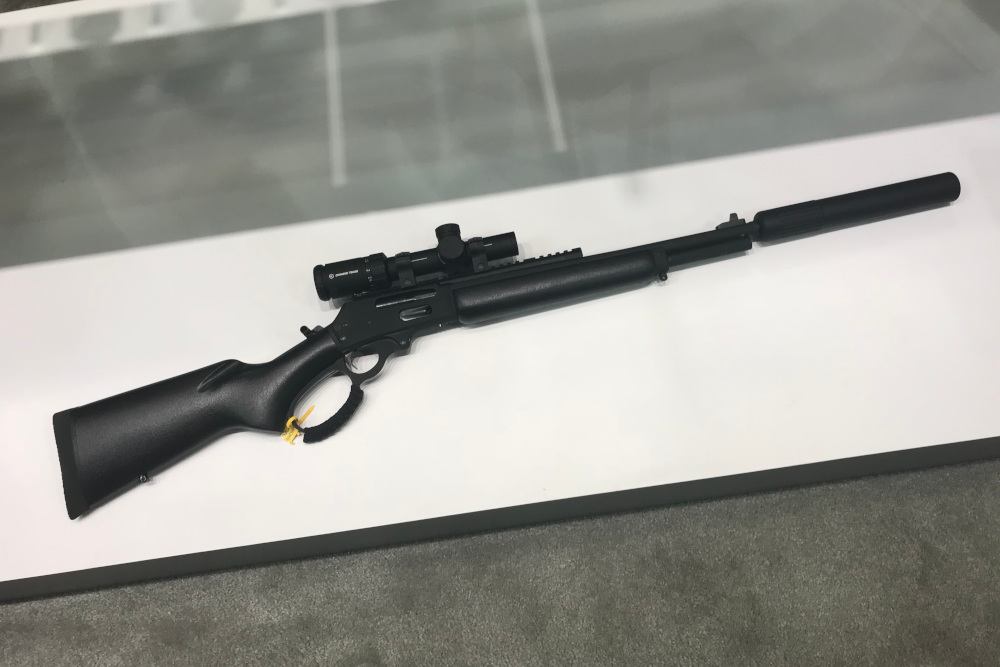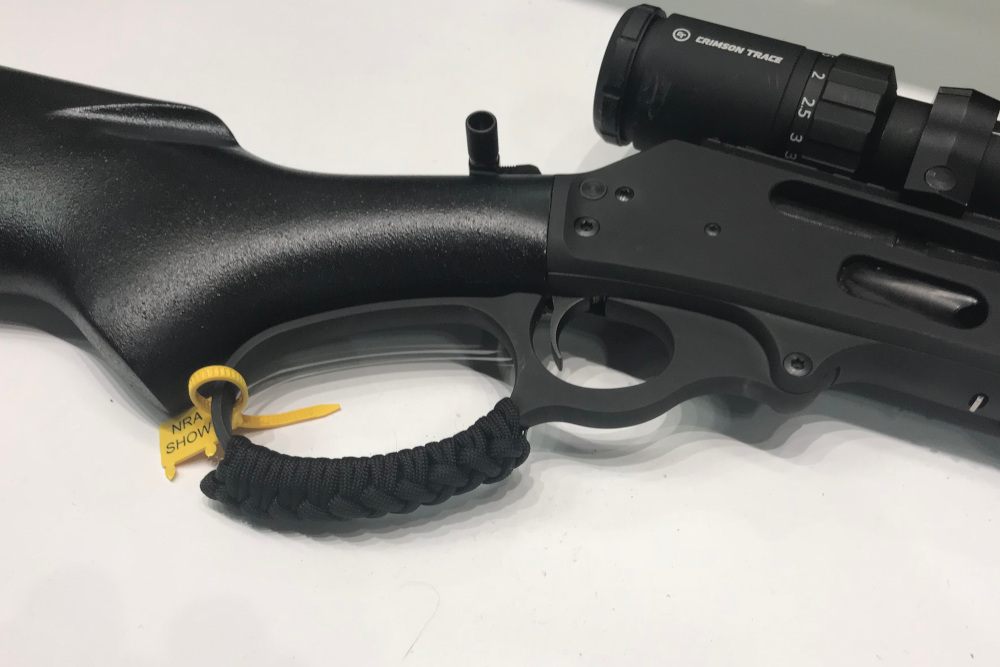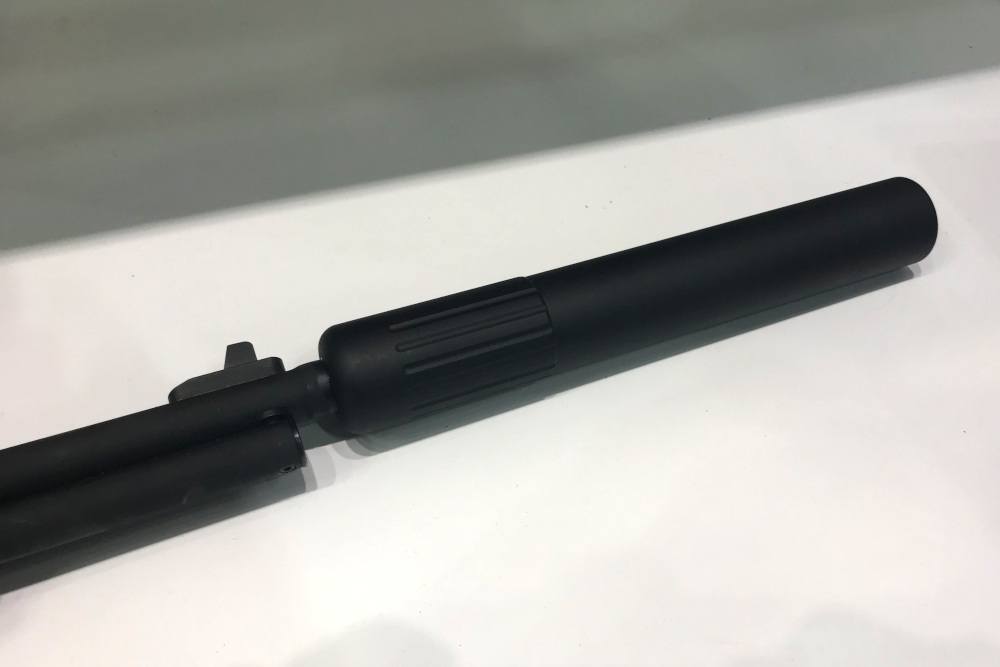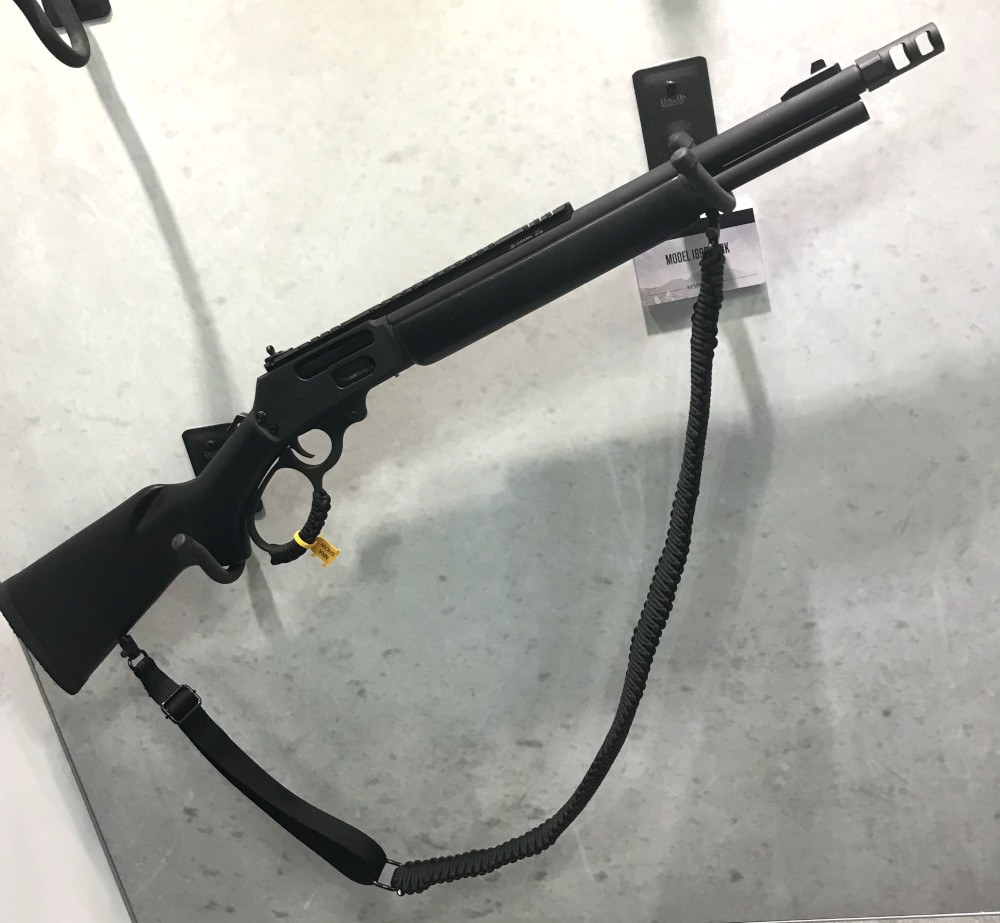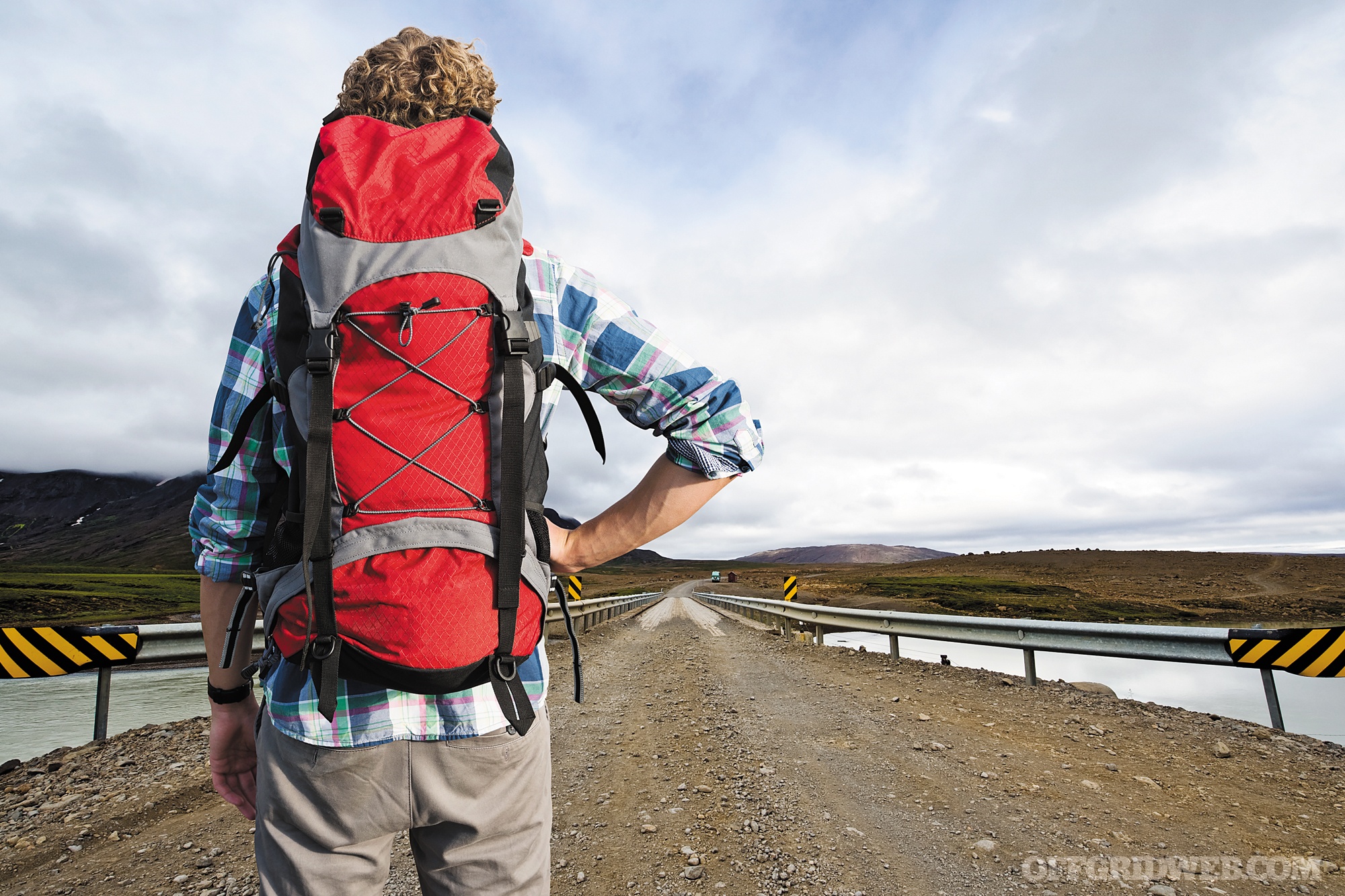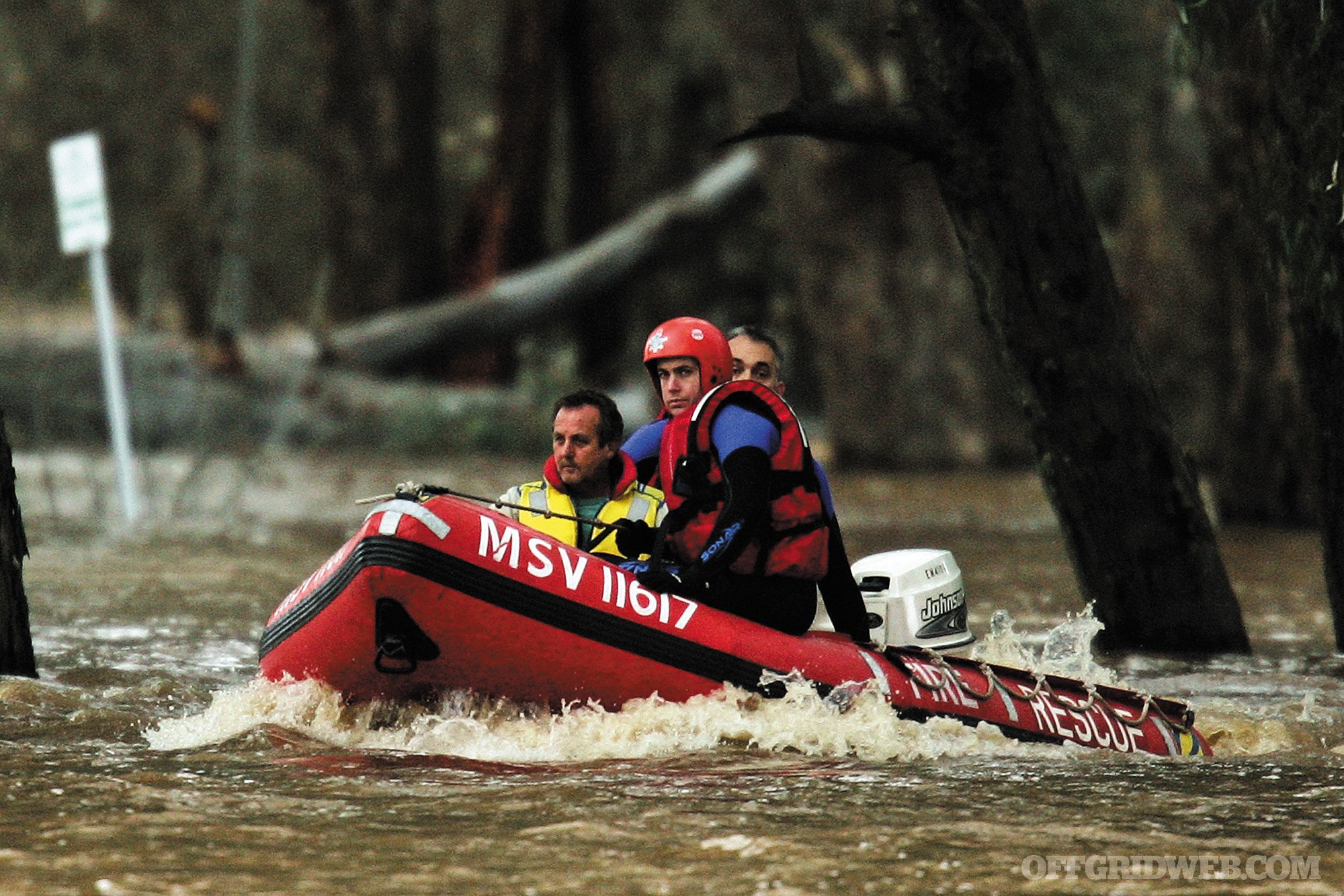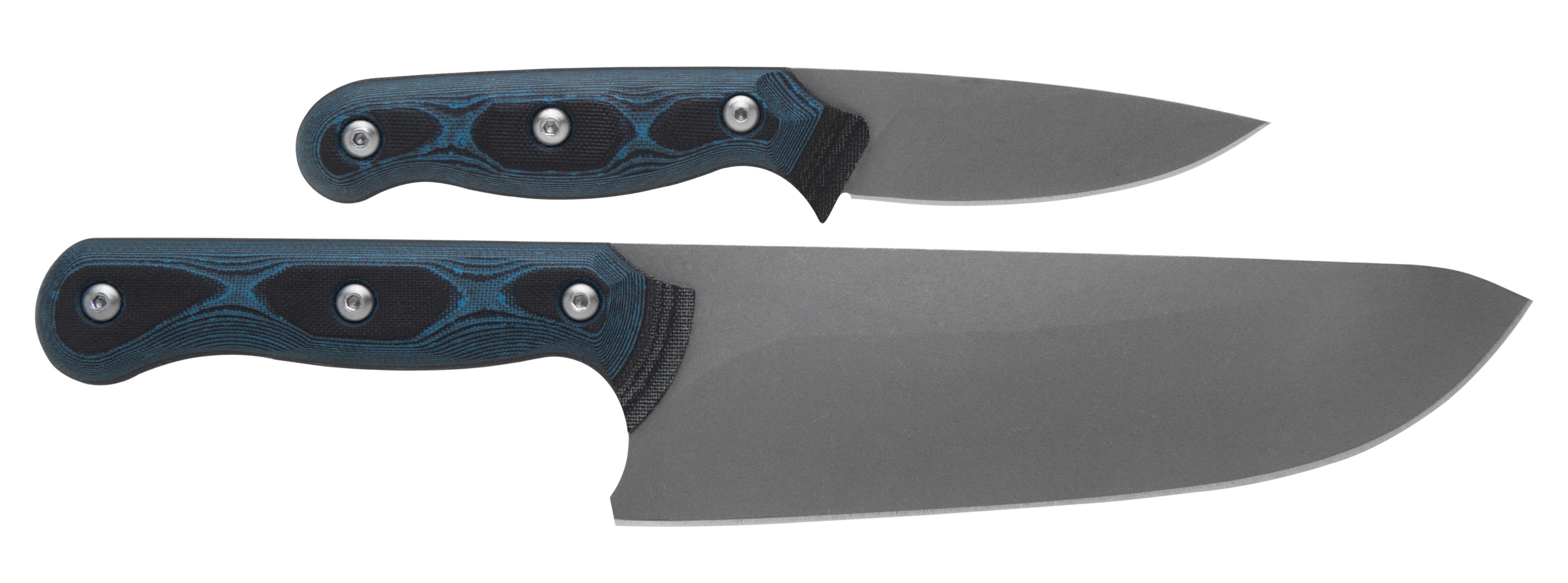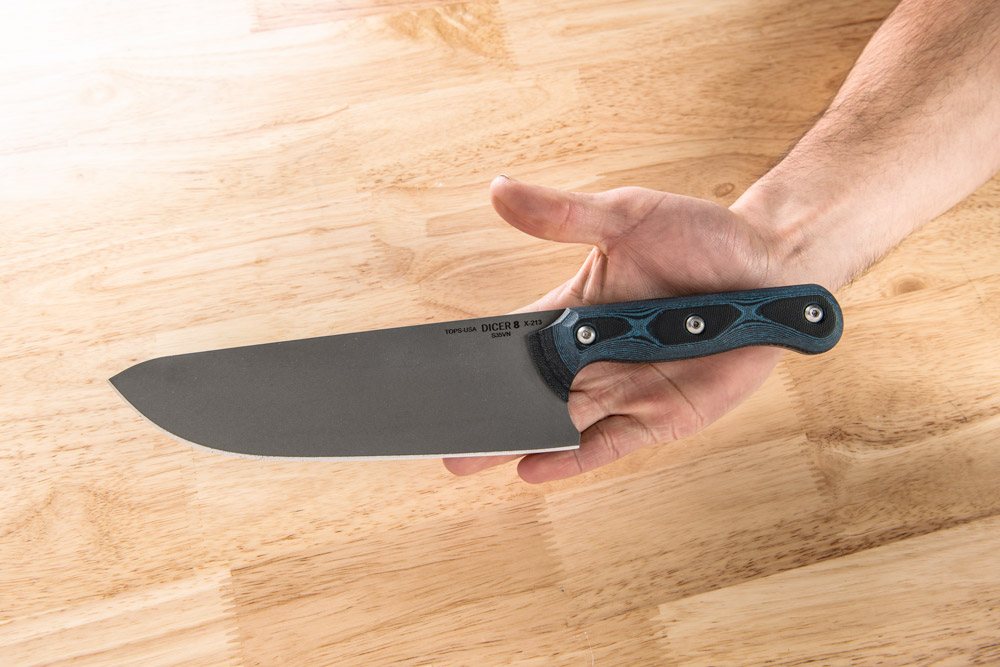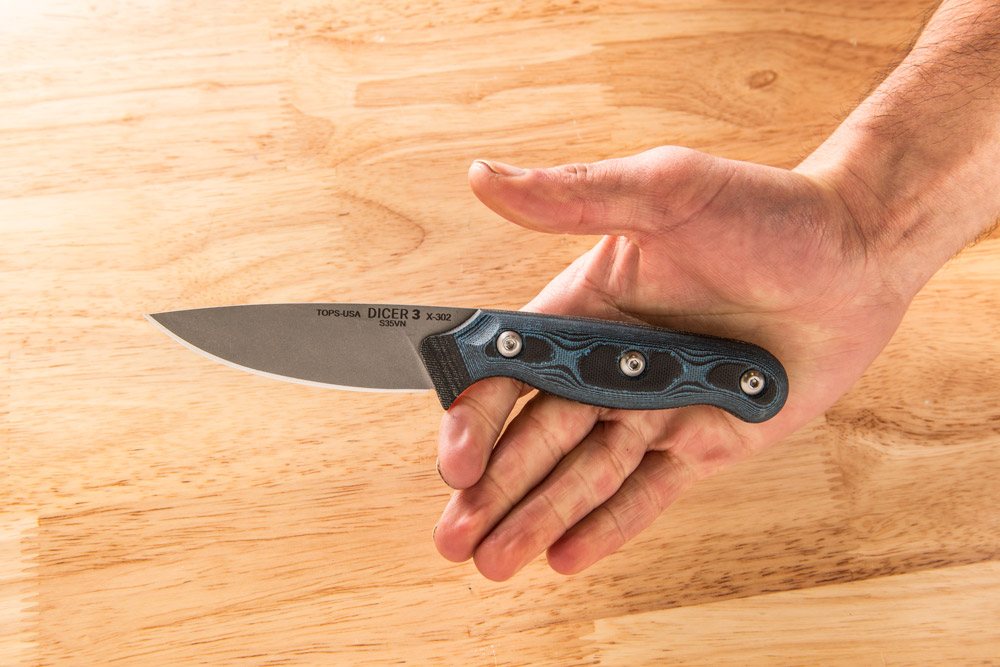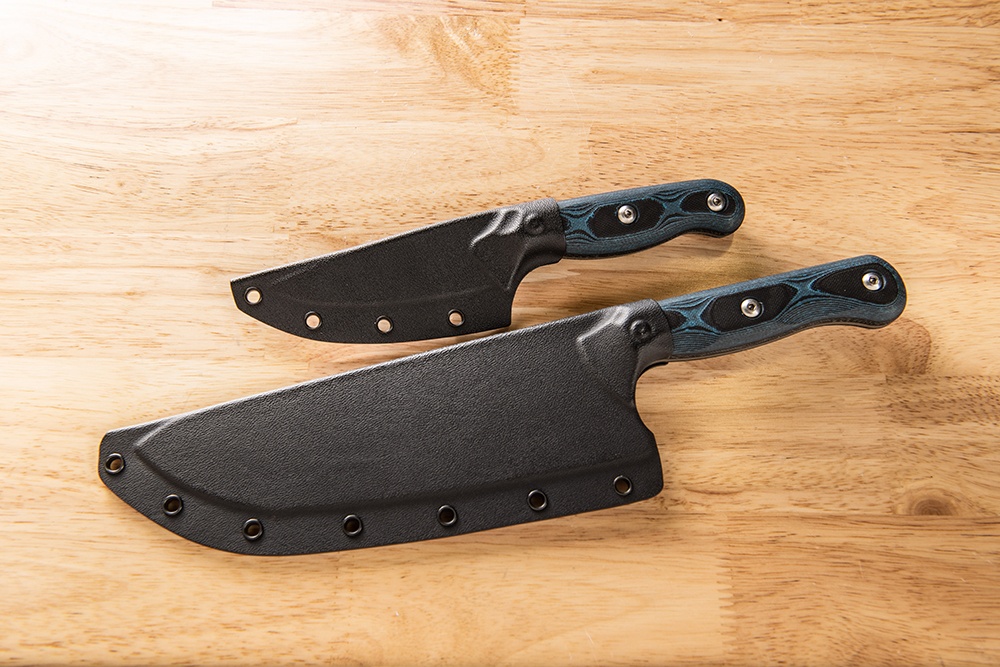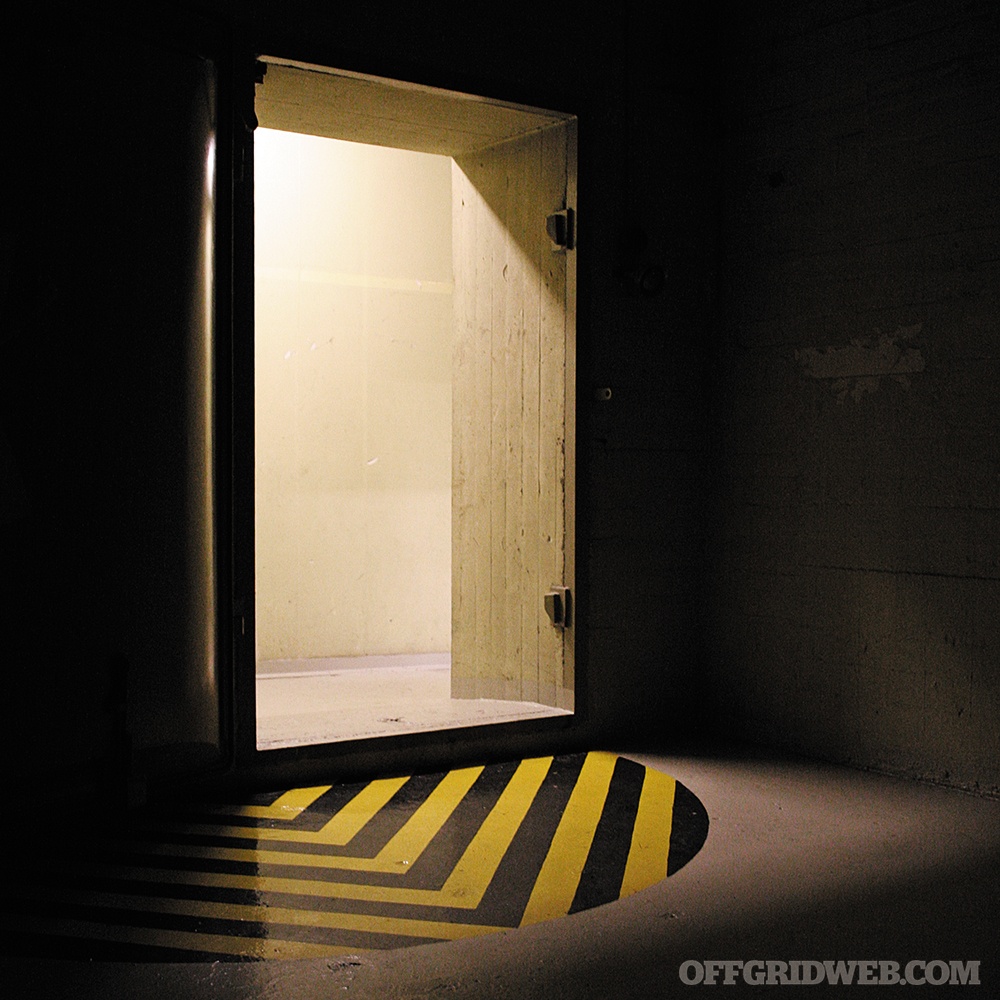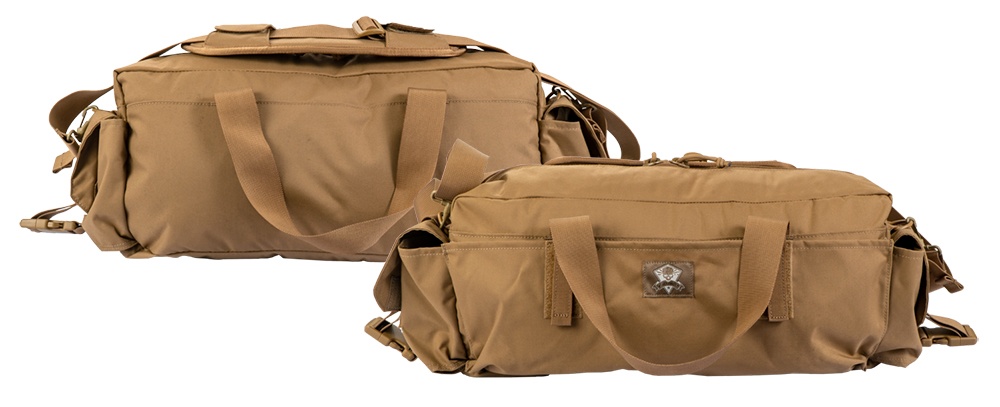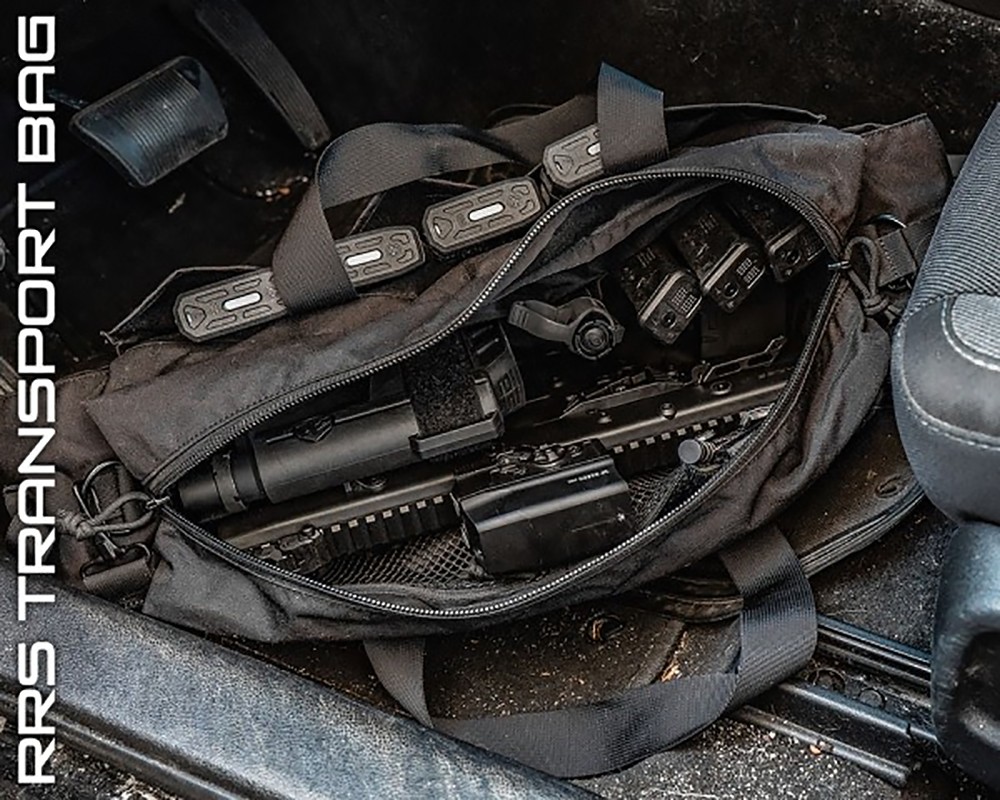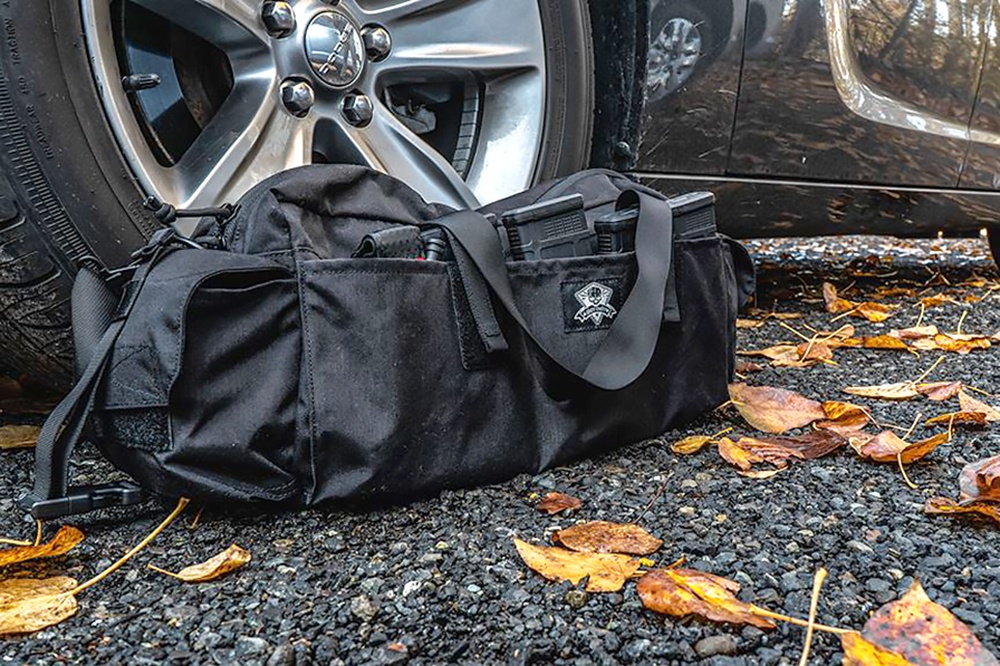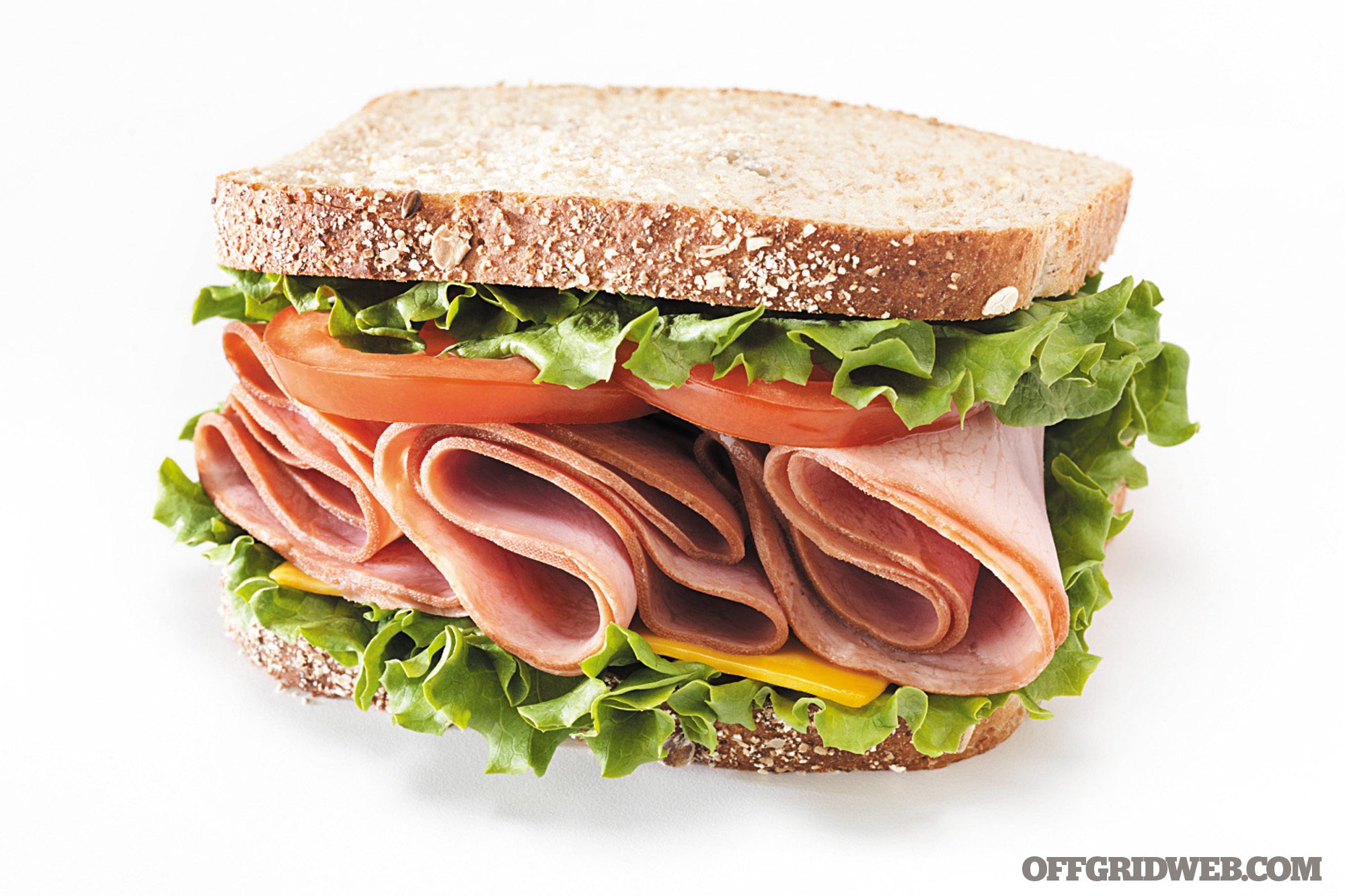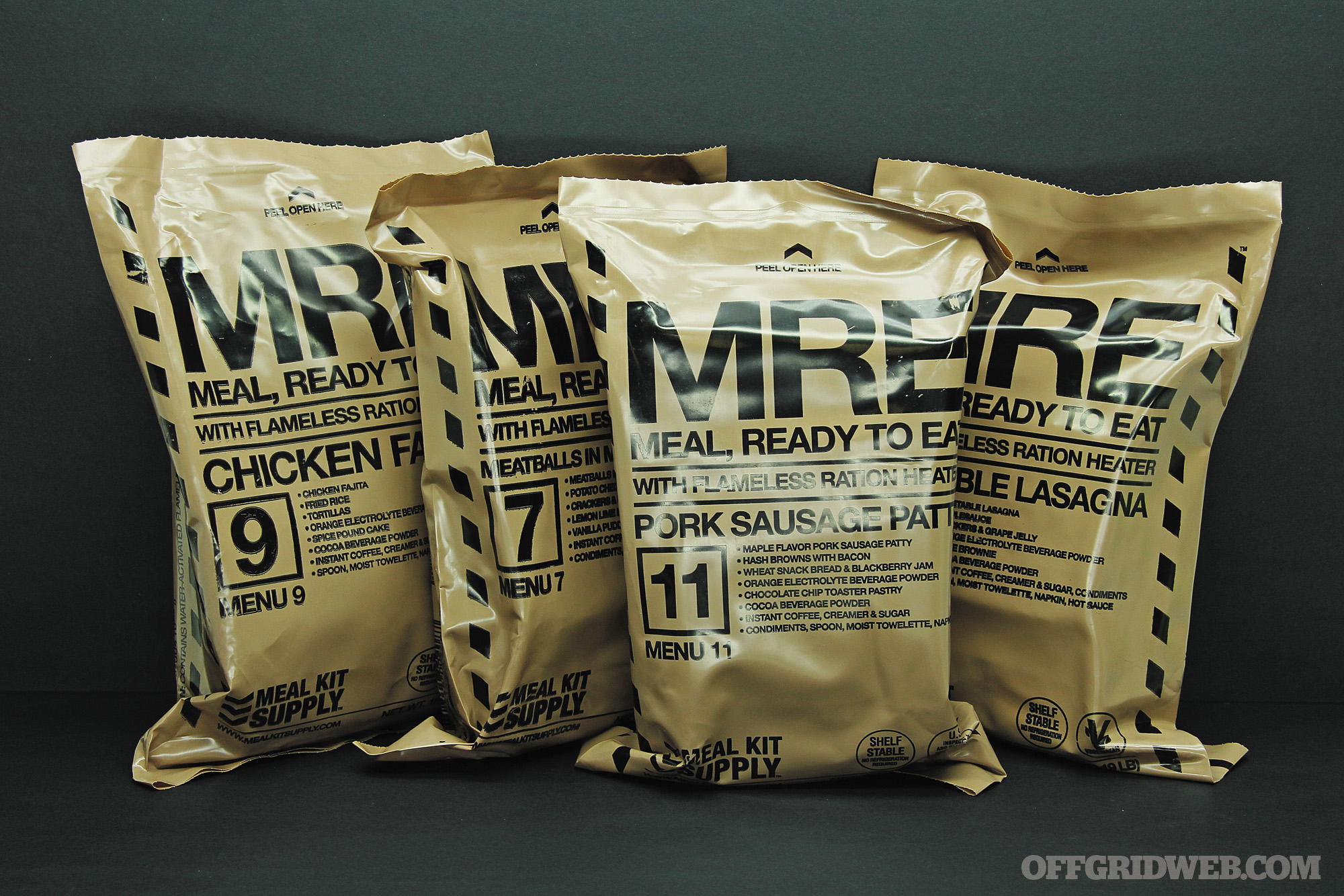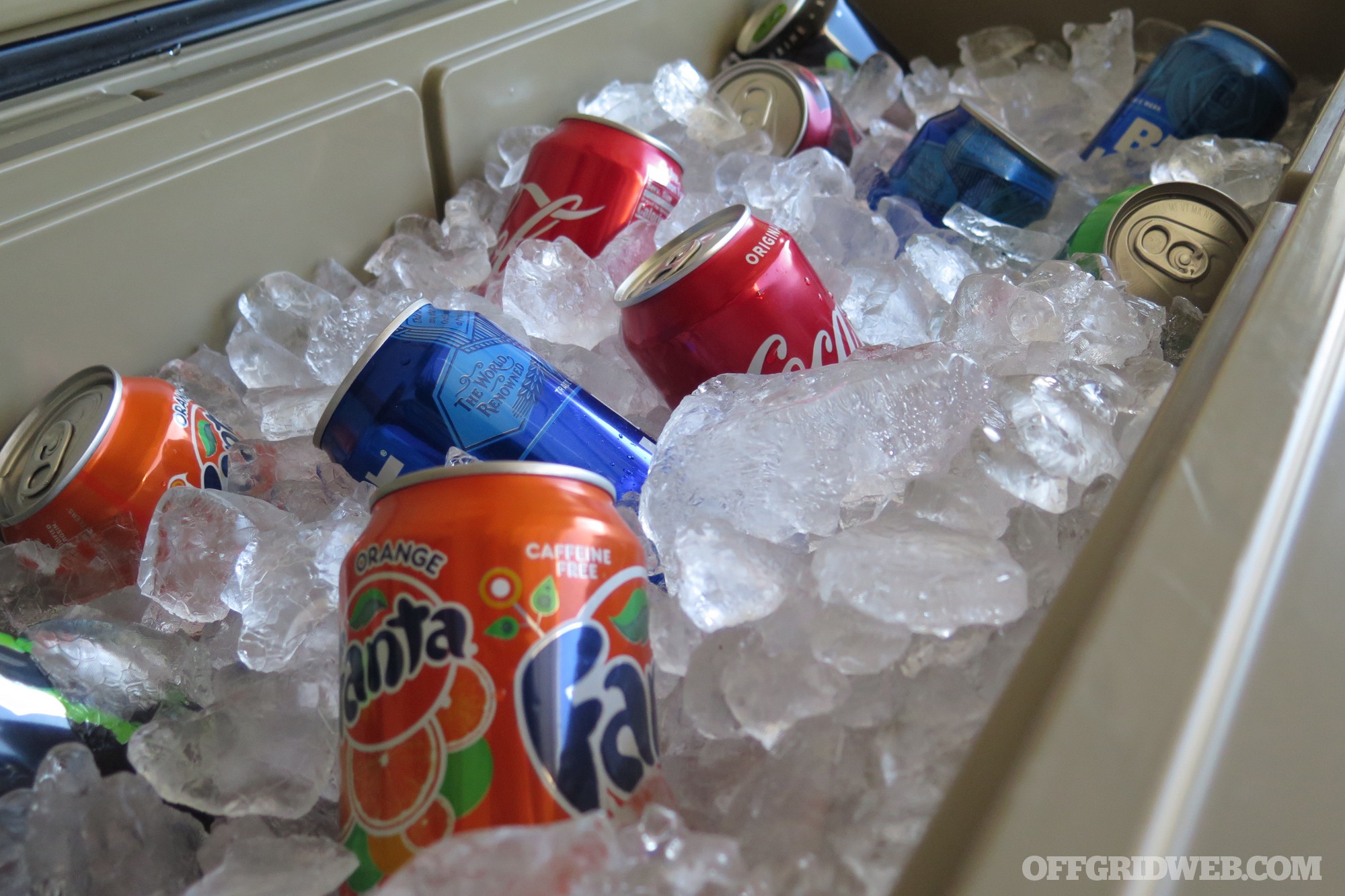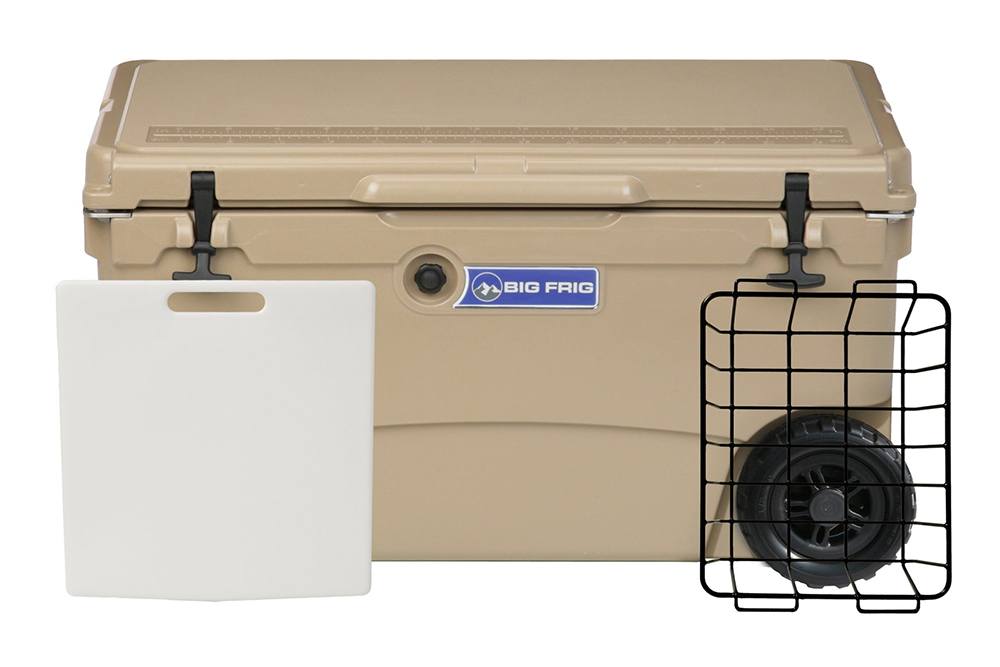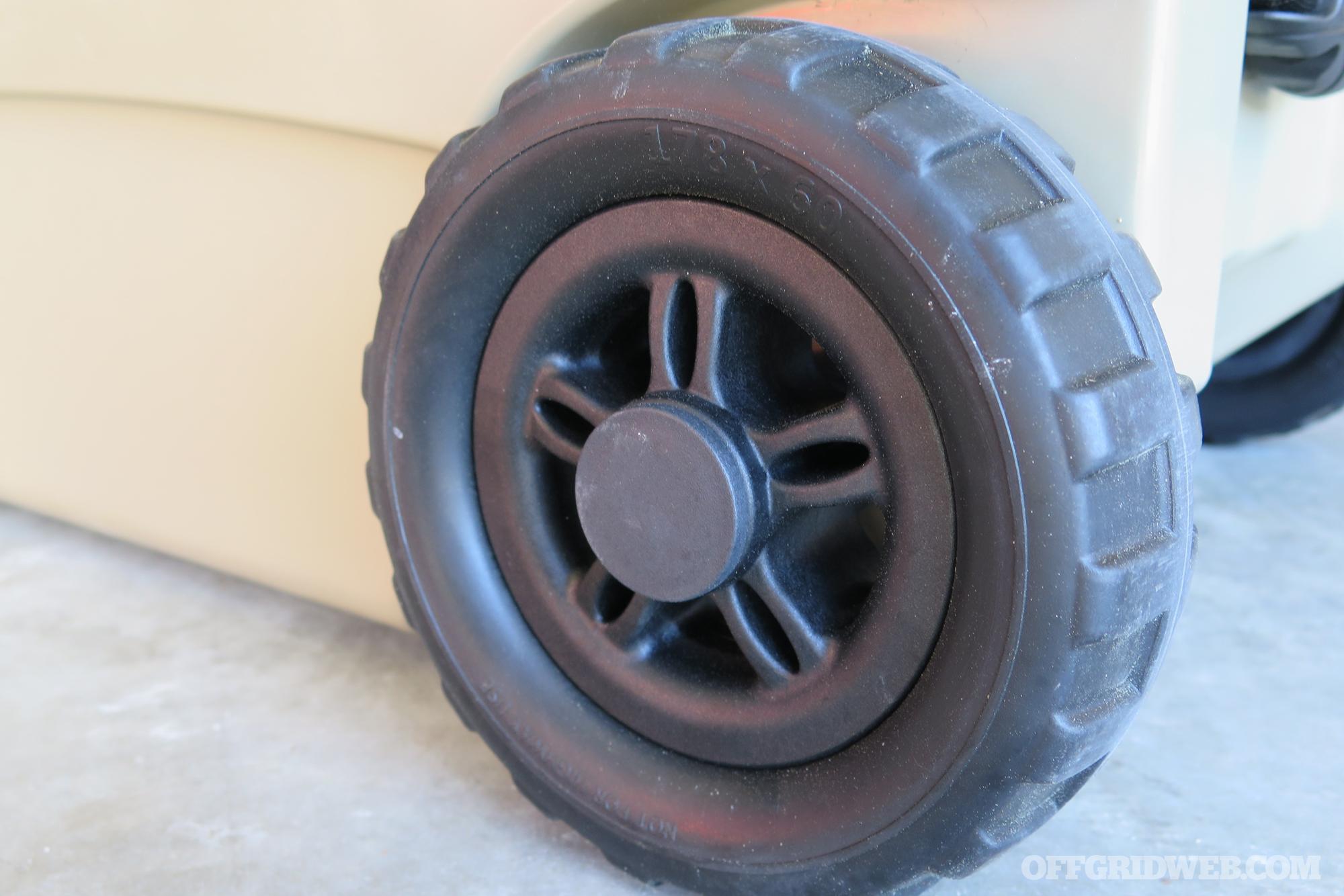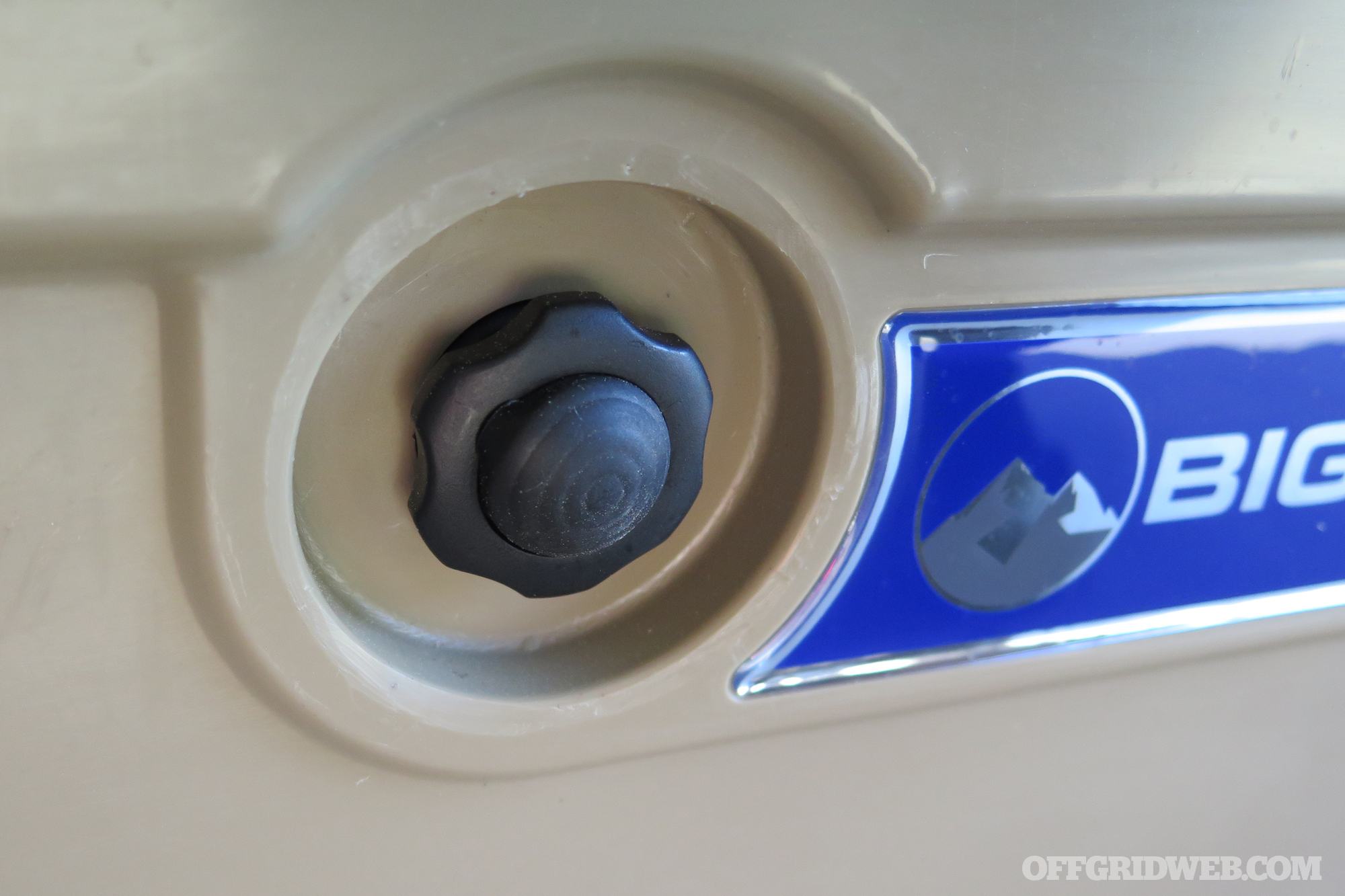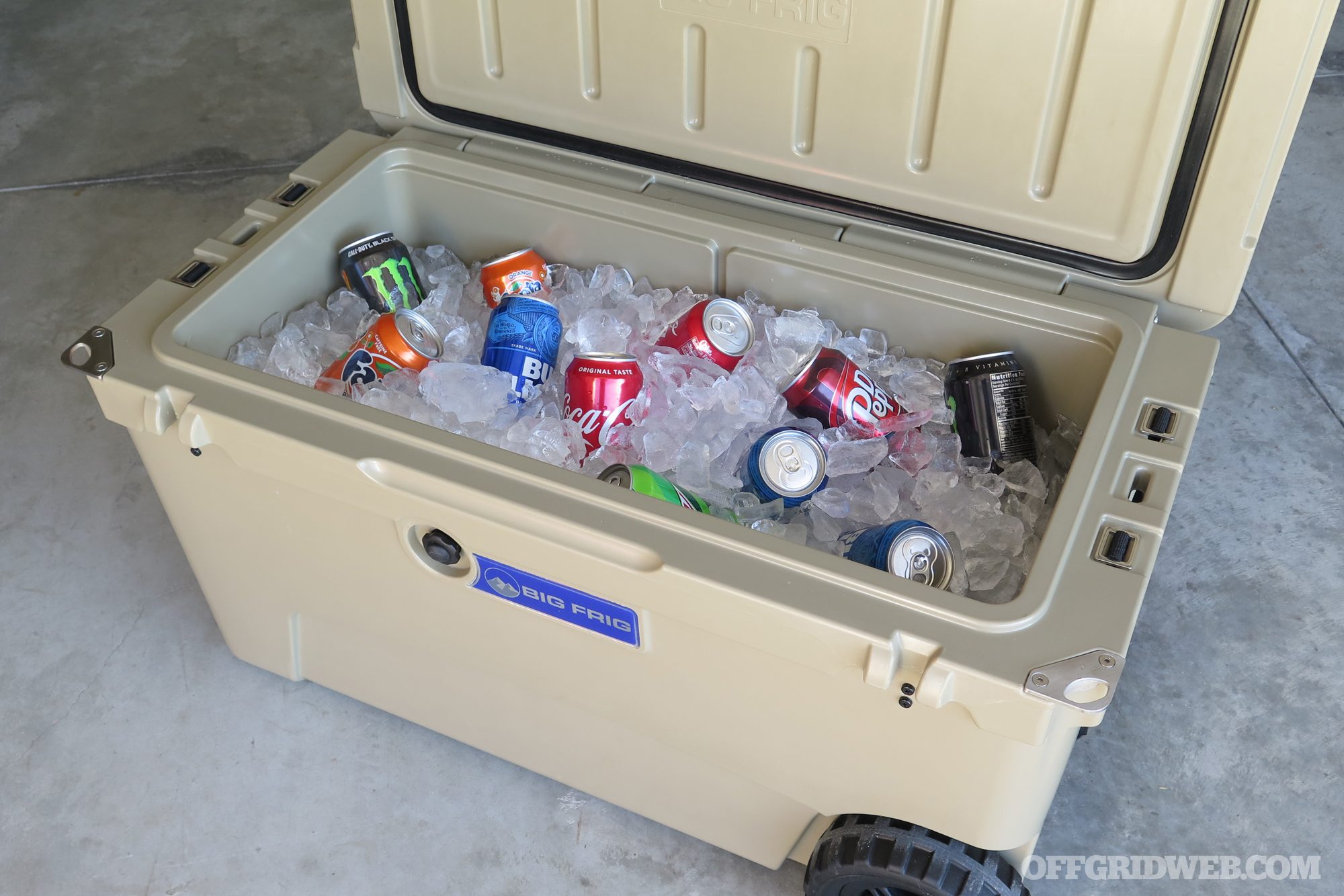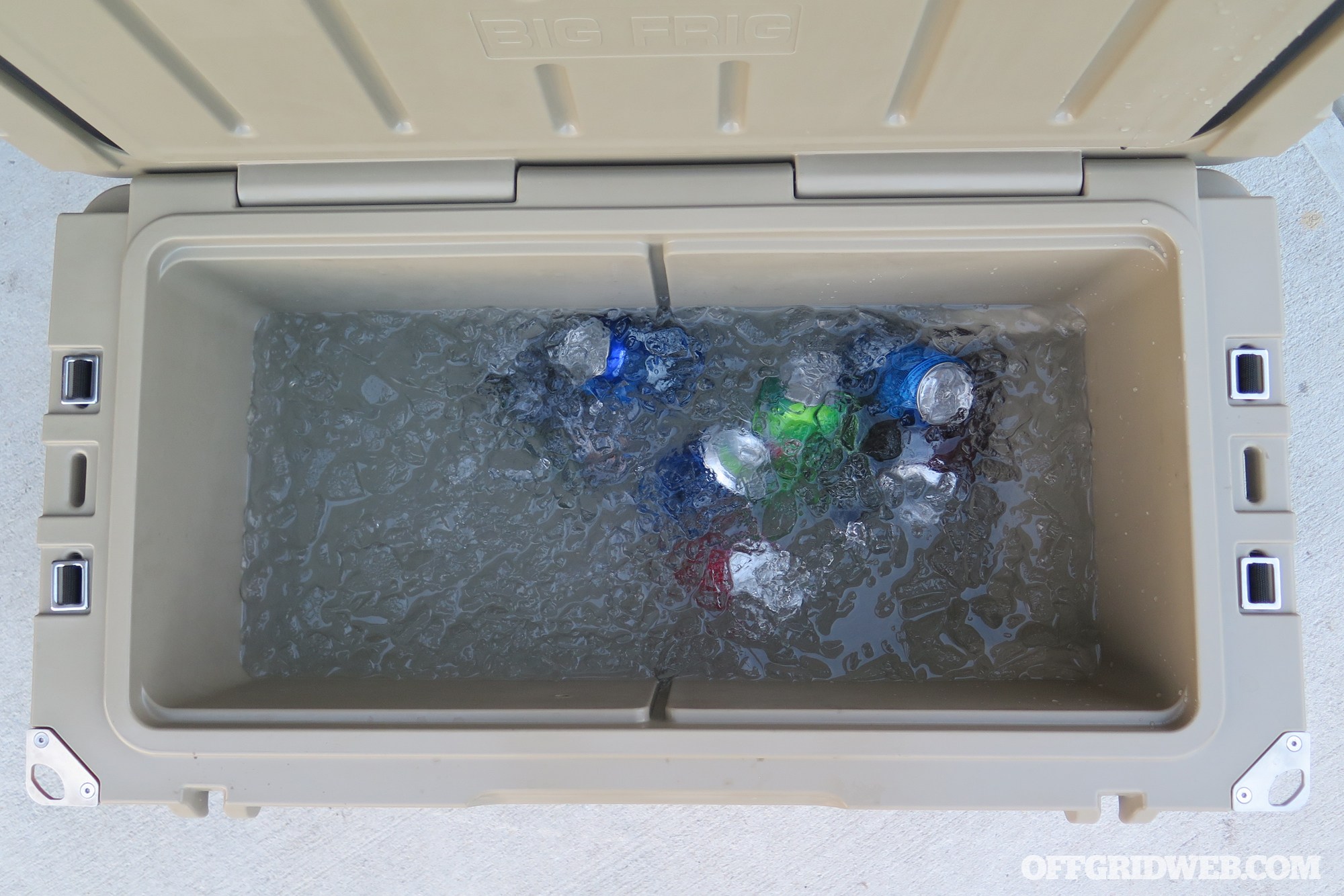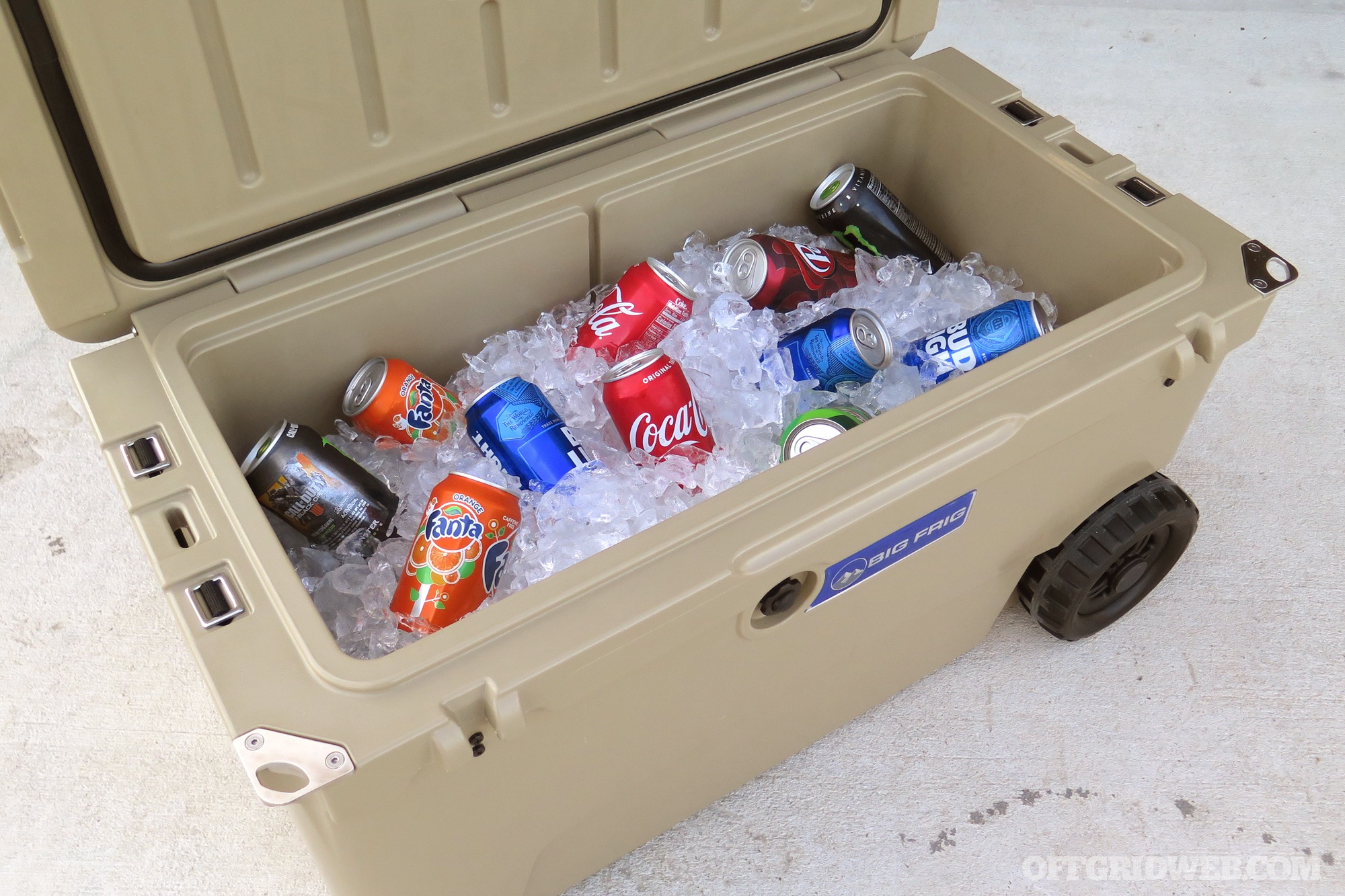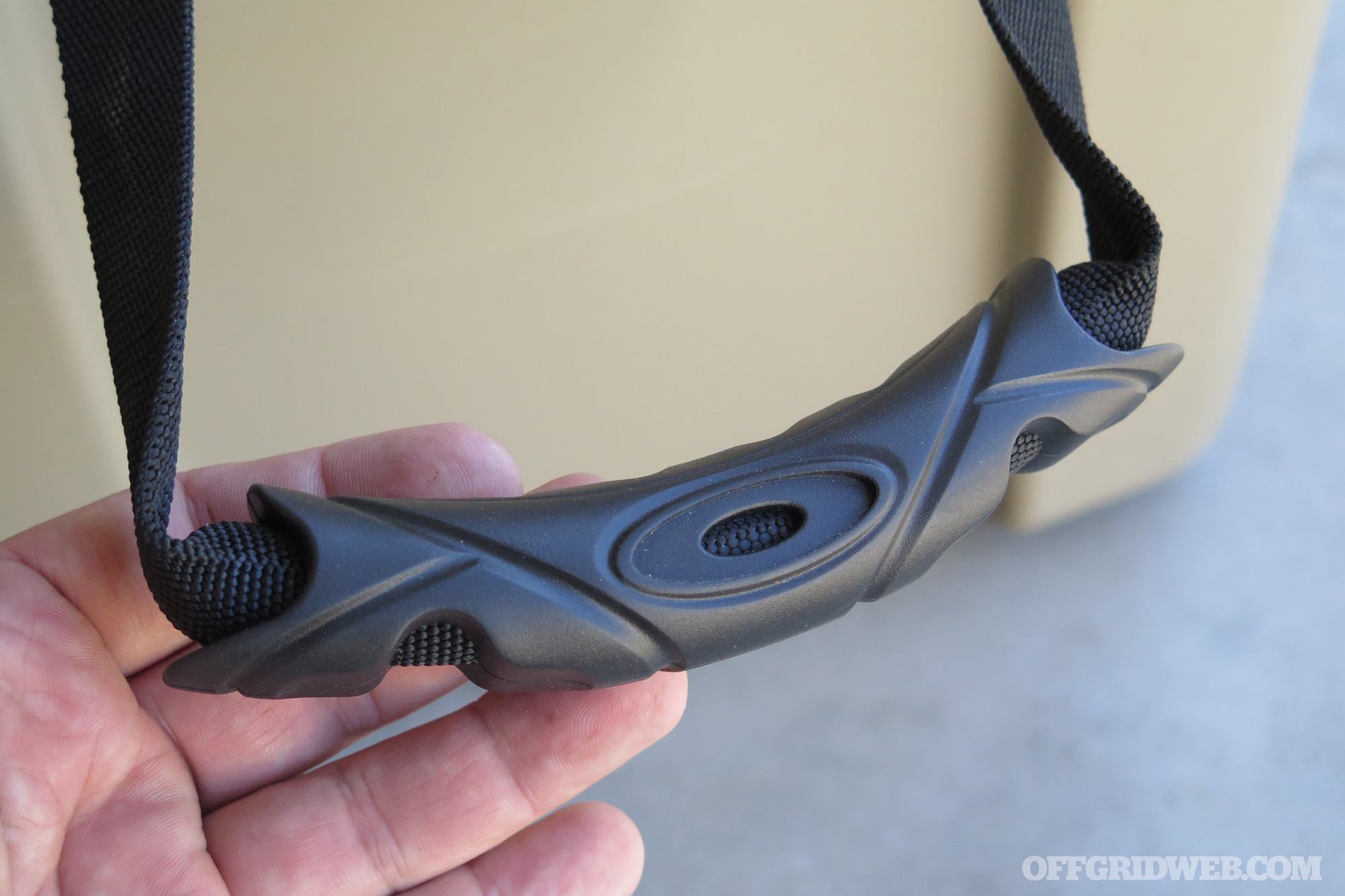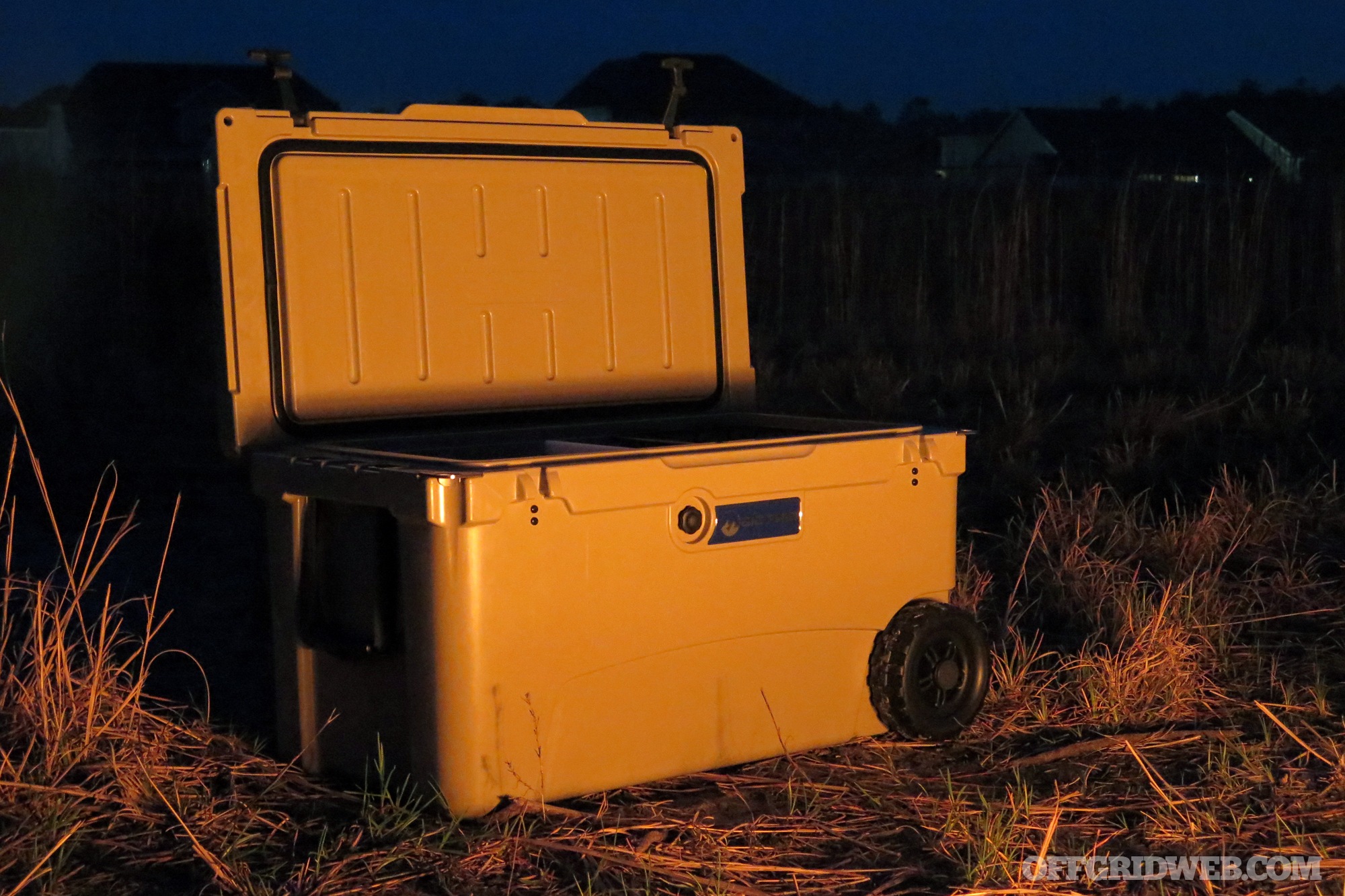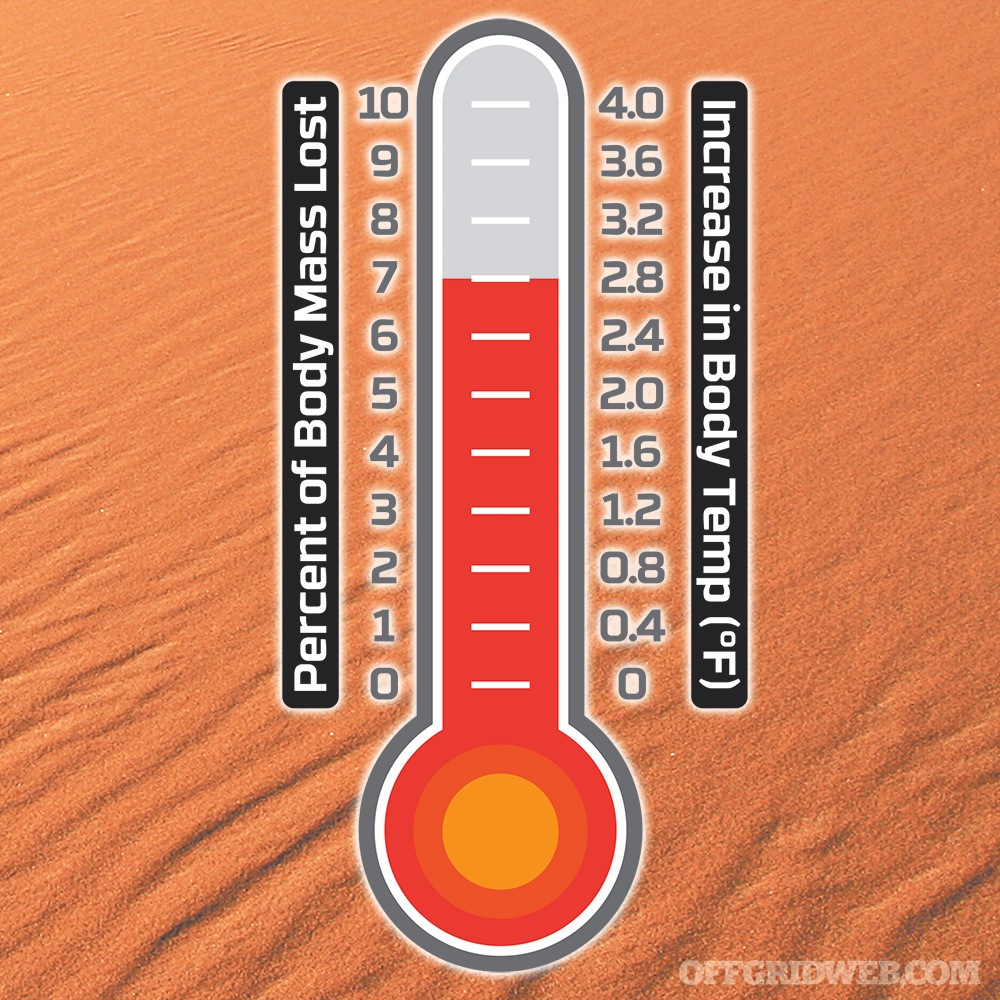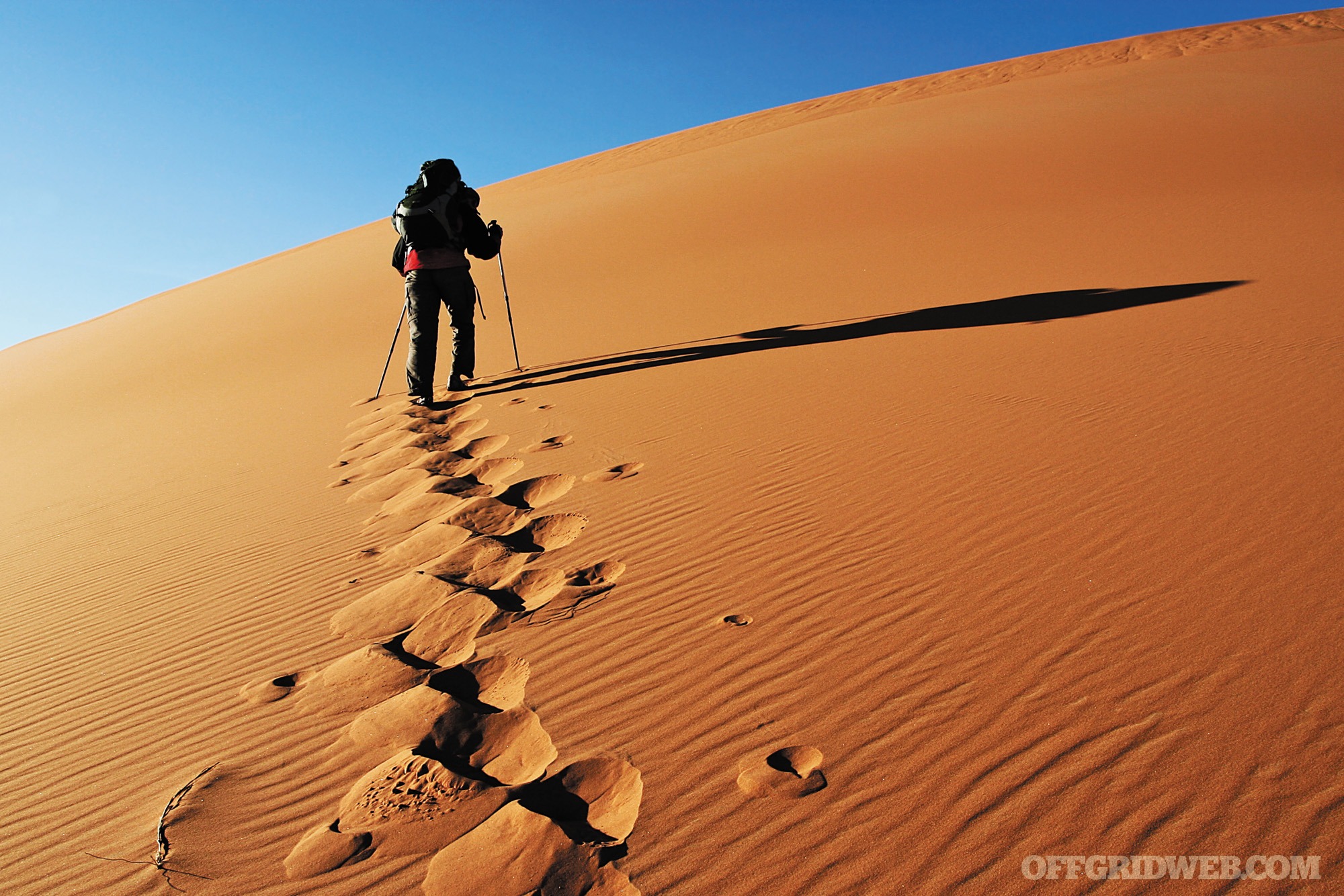We’ve been pleased to see a resurgence in American manufacturing over the last few years, with more outdoor gear companies offering products that are made in the USA. More importantly, these companies have shown that you don’t have to break the bank to afford these products. Kershaw Knives has been expanding its American-made line of folding knives with models such as the Link, Dividend, and most recently, the Bareknuckle.
Design Origin
The Kershaw Bareknuckle is one of several knife designs inspired by the Zero Tolerance 0777, an ultra-high-end production folder that was first unveiled eight years ago. Even the Bareknuckle’s model number, 7777, is a nod to this origin. The ZT 0777 featured a Bohler N360 blade with herringbone-pattern Damascus steel on the spine, as well as a sculpted carbon fiber handle, KVT ball bearing pivot, and a titanium Sub-Frame Lock (more on this feature later). The 0777 generated a lot of buzz at the time, and won Blade Magazine’s Overall Knife of the Year award for 2011, but its high price point made it primarily a collector’s item. It was officially retired in 2013.
As a result of its design inspiration, the Bareknuckle shares lineage with the current-production Zero Tolerance 0770 and Kershaw Natrix. Both of these knives were also directly inspired by the 0777. However, before you question the need for three knives with such similar designs, consider the differences between them.
As anyone who knows the Zero Tolerance brand can guess, the 0770 is made in America and occupies the premium price point at $240. Its blade is S35VN steel, and it features a liner lock (unlike most other frame-lock ZTs). The Kershaw Natrix, on the other hand, is positioned as an affordable every-day carry tool. It’s manufactured overseas with an 8Cr13MoV blade, and sold at an MSRP of $63.
The Kershaw Bareknuckle
The Bareknuckle essentially splits the difference between its two siblings. It’s priced at $120, but also made in America.
Its blade is constructed from Sandvik 14C28N, a stainless steel that was created through a partnership between Kershaw and Swedish steel-maker Sandvik. The material offers excellent corrosion resistance and a good balance between edge retention and ease of sharpening. This steel is also fine-blankable, meaning that Kershaw can mass-produce partially-finished fine blanks of blades and quickly finish them by hand. The fine blanking process keeps manufacturing cost relatively low, so it’s an important factor in producing a quality knife in the USA at this price point.
The Bareknuckle’s handle consists of two pieces of lightweight aluminum, sculpted with the same smooth lines and large forefinger notch seen on the 0777. The pivot is a much simpler design than the decorative machined pivots of its predecessors, and the flipper seems to be rounded slightly in comparison. The deep-carry pocket clip is very similar to that of the Natrix, but now features a recessed Kershaw logo instead of the black logo used on the Natrix’s clip.
Sub-Frame Lock
Like the Natrix and the original ZT 0777, the Kershaw Bareknuckle uses a Sub-Frame Lock mechanism. This patented lock looks similar to a traditional frame lock, but instead of being integrated directly into the frame, it uses a lock bar attached to a steel plate inside the frame.
Steel is heavy, so if you want a lightweight handle, you’ll be better off with aluminum. However, aluminum isn’t well-suited to use on frame locks because it wears quickly compared to steel. The Sub-Frame Lock combines the strength of a steel lock bar with the lightness of an aluminum handle, all while offering a sturdier feel than a liner lock.
Our Impressions
We spent a few weeks carrying the Kershaw Bareknuckle, and recorded our impressions. On the whole, the knife feels great in hand, with the curved handle and forefinger notch making it easy to control. We liked the blade shape as well — it blends elements of a drop point and sheepsfoot, and the sharp tip makes quick work of cutting through boxes and packaging. The reversible deep-carry pocket clip is a plus, and a feature we’ve paid extra to add to a few of our other knives by way of aftermarket replacement clips.
Flipping the blade open presents some issues. The flipper is rounded at the tip, and the situation is exacerbated by a strong lock bar detent that applies pressure to the blade as it pivots. Sometimes the blade flicked open smoothly. Sometimes it swung open halfway before stopping. Sometimes our fingers slipped off the flipper and the blade didn’t budge. This problem diminished as we broke in the knife, and diminished more after generously oiling the pivot and detent, but it never went away entirely.
Fortunately, once the knife is opened, the Sub-Frame Lock keeps it in place securely and is simple to disengage. From a purely aesthetic standpoint, we aren’t fans of the “Pat 9,120,234” prominently laser-etched on the lock. We assume it has to be there for legal reasons — then again, none of the other knives in the family have patent number etchings.
In terms of materials, the Sandvik 14C28N steel is a good choice for EDC. While it’s not as durable as premium steels like S35VN, it’s a big step up from the 8Cr13MoV used on the imported Natrix. We’ve also tested the aforementioned Kershaw Link and Dividend from the company’s Made in USA series, and the Link would be our first choice of the three designs. That said, the Link uses 420HC blade steel, so we’d consider the Bareknuckle’s Sandvik steel to be superior.
The Bareknuckle is an appealing mid-range EDC knife, especially for fans of the 0777 design. The materials are solid, and we appreciate that it’s made in the USA. Our opinion of it is somewhat mixed, however, due to the unavoidable issues we experienced with flipping it open.
For more information on the Kershaw Bareknuckle, go to KershawKnives.com.
Pros:
- Handle design provides a comfortable and secure grip
- Tip shape makes this knife excellent for everyday slicing and piercing tasks
- Deep-carry pocket clip tucks the knife neatly into pockets
- Made in the USA
Cons:
- Flipper’s shape and placement make opening the knife tricky
- The grind on our test sample’s blade was slightly uneven at the tip
- Prominent patent label on the Sub-Frame Lock detracts from the knife’s appearance

